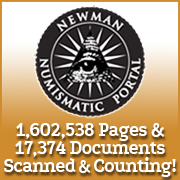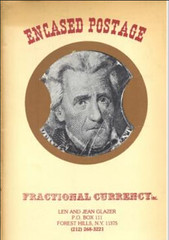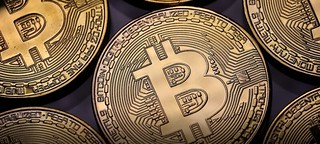
About UsThe Numismatic Bibliomania Society is a non-profit organization devoted to the study and enjoyment of numismatic literature. For more information please see our web site at coinbooks.org SubscriptionsThose wishing to become new E-Sylum subscribers (or wishing to Unsubscribe) can go to the following web page link MembershipThere is a membership application available on the web site Membership Application To join, print the application and return it with your check to the address printed on the application. Print/Digital membership is $40 to addresses in the U.S., and $60 elsewhere. A digital-only membership is available for $25. For those without web access, write to: Terry White, Treasurer AsylumFor Asylum mailing address changes and other membership questions, contact Terry at this email address: terrywhite5475@yahoo.com SubmissionsTo submit items for publication in The E-Sylum, just Reply to this message, or write to the Editor at this address: whomren@gmail.com BUY THE BOOK BEFORE THE COINSale Calendar |
- WAYNE'S WORDS: THE E-SYLUM JANUARY 3, 2018
- KOLBE & FANNING’S 2018 NEW YORK SALE LOT VIEWING
- NEW BOOK: FORGOTTEN COINS 25TH ANNIVERSARY
- NEW BOOK: CARSON CITY MORGAN DOLLARS, 4TH EDITION
- EL SITIO NO. 25 PUBLISHED
- BOOK REVIEW: THE JUDGMENT OF EXPERTS
- NEWMAN PORTAL ADDS FCCB NEWSLETTER
- NEWMAN PORTAL SEARCH: “SCHOOL GIRL”
- EDITOR ROBERT R. VAN RYZIN RETIRES
- STUNT PILOT COIN DEALER: KEN NICHOLS
- NOTES FROM E-SYLUM READERS: DECEMBER 31, 2017
- MORE ON THE "MOBILITATE VIGET" VIGNETTE
- UNSOLVED RIDDLES OF THE CONTINENTAL DOLLAR
- VOCABULARY TERMS: ALL ABOUT DIES
- WHY JANVIERS SHOULD NOT BE SCRAPPED
- ALBERT HIRSCHFELD (1891-1972)
- HARVEY STACK'S NUMISMATIC FAMILY, PART 8
- MORE ON BANKNOTE ENGRAVER ROBERT SAVAGE
- MORE ON THE ROBERT SAVAGE EDWARD VIII PORTRAIT
- 1859-S COINAGE AND TRADE WITH CHINA AND JAPAN
- TOM BABINSZKI VISITS INDIA
- SELECTIONS FROM LEGEND REGENCY AUCTION XXV
- NUMISMATIC NUGGETS: DECEMBER 31, 2017
- THE ANILLO TOKEN RESTRIKES
- LSCC AND BCCS AT FUN IN TAMPA
- NUMISMATIC CAREERS: A CHAT WITH NGC
- ARTICLES HIGHLIGHT HENRY III GOLD PENNY
- THE 1934 NAZI-ZIONIST COOPERATION MEDAL
- NORTH KOREA'S KIM JONG-SUK GOLD COIN
- NEW YORK CITY CREEPING TOWARD CASHLESSNESS
- BITCOIN AND THE BANK OF ENGLAND'S CRYPTOCURRENCY
- MORE CHRISTMAS TOKENS
- HAPPY NEW YEAR 2018
- FEATURED WEB SITE: NUMISMATIC STUDIES
Click here to access the complete archive
To comment or submit articles, reply to whomren@gmail.com
Content presented in The E-Sylum is not necessarily researched or independently fact-checked, and views expressed do not necessarily represent those of the Numismatic Bibliomania Society.
WAYNE'S WORDS: THE E-SYLUM JANUARY 3, 2018
 This week we open with Kolbe-Fanning sale lot viewing, two new books, a new periodical and one book review. Other topics this week include updates from the Newman Portal, editor Bob Van
Ryzin, dealer Ken Nichols, collector Albert Hirschfeld, banknote engraver Robert Savage, forget Mark Hofmann, the Anillo token restrikes, and North Korea's new gold coin.
This week we open with Kolbe-Fanning sale lot viewing, two new books, a new periodical and one book review. Other topics this week include updates from the Newman Portal, editor Bob Van
Ryzin, dealer Ken Nichols, collector Albert Hirschfeld, banknote engraver Robert Savage, forget Mark Hofmann, the Anillo token restrikes, and North Korea's new gold coin.
To learn more about contemporary colonial coin counterfeits, Carson City Morgan Dollars, shearing tokens, charity tokens, the FCCB Newsletter, the "School Girl" pattern, the Eliasberg 1872-CC quarter, New York City small change bills of 1814, die-engraving pantographs, 10,000 bust half dollars, the Silly Head Large Cent, the Henry III gold penny, and the Nazi-Zionist cooperation medal, read on. Have a great week, everyone!
Wayne Homren
Editor, The E-Sylum
KOLBE & FANNING’S 2018 NEW YORK SALE LOT VIEWING
LOT VIEWING FOR KOLBE & FANNING’S 2018 NEW YORK BOOK AUCTION
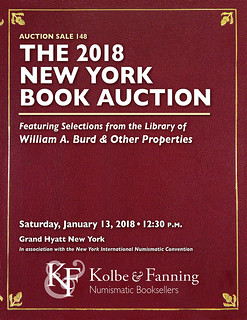 Kolbe & Fanning’s 2018 New York Book Auction is coming up soon, being held on Saturday, January 13, 2018 in the Empire State Ballroom I of the Grand Hyatt hotel in Manhattan (109 E. 42nd
Street), beginning at 12:30 pm Eastern Time. The sale is being conducted in conjunction with the New York International Numismatic Convention, which is being held at the Grand Hyatt for the first
time.
Kolbe & Fanning’s 2018 New York Book Auction is coming up soon, being held on Saturday, January 13, 2018 in the Empire State Ballroom I of the Grand Hyatt hotel in Manhattan (109 E. 42nd
Street), beginning at 12:30 pm Eastern Time. The sale is being conducted in conjunction with the New York International Numismatic Convention, which is being held at the Grand Hyatt for the first
time.
As always, selected lots will be available for viewing by potential bidders in the days leading up to the auction. Auction lot viewing will be held in the Grand Hyatt’s Plymouth Room on Thursday, January 11 from 9:00 a.m. to 5:00 p.m. and Friday, January 12 from 9:00 a.m. to 6:00 p.m. In addition, lots will be available for viewing on the day of the sale from 9:00 a.m. till noon.
Due to the venue’s smaller viewing room, we are bringing fewer lots than usual to New York. Generally, only unusual or especially valuable works will be available for viewing, and only representative volumes of multi-volume works. Bidders who wish us to bring a particular lot for viewing are urged to contact David Fanning as soon as possible at df@numislit.com. Every effort will be made to accommodate requests. Bidders are reminded that every lot in the sale is illustrated in the online catalogue at bid.numislit.com. We have just recently added additional online photos, which bidders may wish to consult.
The full online catalogue is available through Kolbe & Fanning’s online bidding platform at bid.numislit.com. To register for the sale online, bidders must go to bid.numislit.com and register or sign in. Once you have set up an account, you may browse lots, place advance bids, or participate in the live sale online. The catalogue, featuring highlights from the outstanding numismatic library formed by Chicagoan William A. Burd along with other properties, is also available through the Kolbe & Fanning app, which can be downloaded from the Apple Store or Google Play Store. Printed catalogues have been mailed to active clients.
As always, bids may also be placed via post, email, fax or phone. Bids placed via post, fax, or to the Gahanna office phone must be received by Monday, January 8, in order for them to be processed. Bids emailed to David Fanning will be accepted through Friday, January 12. Advance absentee bids may be placed anytime online; live internet bidding will be available during the sale itself through the bid.numislit.com. platform.
Kolbe & Fanning Numismatic Booksellers LLC are a licensed and bonded auction firm in the State of Ohio. For more information, please see the Kolbe & Fanning website at numislit.com or email David Fanning at df@numislit.com. To register for the sale, go to bid.numislit.com. We look forward to your participation.
NEW BOOK: FORGOTTEN COINS 25TH ANNIVERSARY
 Since the initial book on the Forgotten Coins of the North American Colonies was published in 1992 by Krause Publications there has been much advancement of these contemporary
counterfeits by American & Foreign collectors. This book is not so much a research exercise into new areas of contemporary counterfeit collecting but a tribute to an individual who started many
people in collecting these coins when at this time in 1992 few if any collectors thought of collecting contemporary counterfeits.
Since the initial book on the Forgotten Coins of the North American Colonies was published in 1992 by Krause Publications there has been much advancement of these contemporary
counterfeits by American & Foreign collectors. This book is not so much a research exercise into new areas of contemporary counterfeit collecting but a tribute to an individual who started many
people in collecting these coins when at this time in 1992 few if any collectors thought of collecting contemporary counterfeits.
A good definition is a definition we used for the Counterfeit Eight Reales book released in September 2014 by Amazon Books. A Contemporary Counterfeit is defined as a spurious coin made to circulate alongside originals in day to day commerce at the same value, regardless of face value or design type. See the Definitions section within this book.
Specifically, the author will discuss the Canadian Blacksmiths, Spanish/American counterfeits (i.e., Kleeberg Two Reales and the Gurney/Nichols/Lorenzo Eight Reales), English and Irish Halfpence/Farthing contemporary counterfeits principally sold in the Stacks 2008 Michael Ringo Collection and other brief treatments of counterfeits mentioned in the Forgotten Book. The reason I use the word brief as it may take two or three volumes to address all these advancements. Most of the advancements are seen for the U.S. Colonial issues in the American Numismatic Society’s Colonial Newsletter in which the serious student is urged to join the ANS and subscribe to the Colonial Newsletter.
The book will also address all the Anton-Kesse Plate coins in the book and bring their cataloguing into modern thinking such as incorporating certain pieces into now accepted counterfeit families such as the Long-Neck Family of counterfeit British Halfpence. Much of these writings of these new contemporary counterfeit Families as previously alluded to has been published through the Colonial Newsletter which is now overseen by the American Numismatic Society.
The author will be using the Schettino Classification System (CVS: Clement V. Schettino) within this book from his latest CD which treats most of the current Families. When William Anton wrote his book in 1992 with Bruce Kesse he had to go back to D.T. Batty who in 1868 published the work: The Descriptive Catalogue of the Copper Coinage of Great Britain, Ireland, British Islands and Colonies in his 1886 address to the American Numismatic and Archaeological Society titled “Counterfeit Halfpence Current in the American Colonies.”
We then waited almost a century before another great numismatist who as of this writing has past the centurion age mark Eric P. Newman contributed his classic work at the time “American Circulation of English Bungtown Halfpence which constituted a chapter in Studies of Money in Early America in 1976.
Even though great advancements have been made since the days of D.T. Batty and Eric P. Newman in many ways we have only scratched the surface of the pieces described in the original Forgotten Book and today. A simple reason would be that the non-regal group has not even established a universal variety classification system for the British/Irish Families due to their massive numbers and their inherent complexities.
Paperback: 352 pages
Language: English
ISBN-10: 1981898042
ISBN-13: 978-1981898046
Product Dimensions: 8.5 x 0.8 x 11 inches
Shipping Weight: 2.2 pounds
Price: $65
John Lorenzo adds:
I purposely REQUESTED high end glossy type paper for this book and color on most coin pictures which many encompass a 1/2 page to mimic all the the different metal alloys such as silver, brass, copper and gold in their TRUE colors based on their respective XRF analyses. Over 1000+ coins have had individual XRF analyses performed.
To read the complete article, see:
Forgotten Coins of the North American Colonies - 25th Anniversary Edition (https://www.amazon.com/dp/1981898042/ref=sr_1_5)
NEW BOOK: CARSON CITY MORGAN DOLLARS, 4TH EDITION
 Whitman Publishing announces the upcoming January 23, 2018, release of the newly expanded, updated, and revised fourth edition of Carson City Morgan Dollars, by professional numismatists
Adam Crum, Selby Ungar, and Jeff Oxman. The 160-page hardcover book will be available from booksellers and hobby shops nationwide, and online (including at www.Whitman.com), for $24.95.
Whitman Publishing announces the upcoming January 23, 2018, release of the newly expanded, updated, and revised fourth edition of Carson City Morgan Dollars, by professional numismatists
Adam Crum, Selby Ungar, and Jeff Oxman. The 160-page hardcover book will be available from booksellers and hobby shops nationwide, and online (including at www.Whitman.com), for $24.95.
The fourth edition has been updated with new historical photographs; revisions from ongoing research; current coin values; and market commentary. In addition, it has been expanded with 24 more pages of content, including a photographic gallery of the Carson City Mint with government and other images dating from the 1800s to today; an illustrated study by Q. David Bowers of other coins minted at Carson City; and a historical snapshot of Morgan dollar prices and research from the late 1940s.
The history laid out in Carson City Morgan Dollars begins with a worker’s accidental discovery of gold in California in 1848—an event quickly followed by the great California Gold Rush. The authors describe the challenges faced by adventurers in the ensuing scramble for precious metal; the Nevada silver boom of the late 1800s; the birth of the Carson City Mint, the struggles to keep it up and running, and its coinage from 1870 to 1893; and related historical topics.
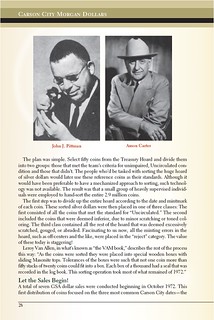
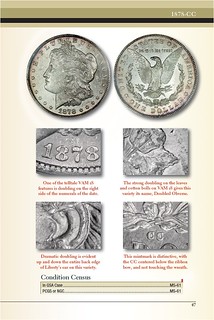
“Among coin collectors, the Carson City Mint is most famous for its gold pieces and, even more so, its Morgan silver dollars,” said Whitman publisher Dennis Tucker. “Collectors can immerse themselves in the detailed market information and practical advice shared by the authors. And even non-collectors will find it to be a fascinating history book.”
Mark Twain, William Jennings Bryan, “Silver Dick” Bland, Kit Carson, the Donner Party, Abe Lincoln, Brigham Young, and other famous Americans make their appearances in the story of the Carson City Mint. Another “main character” is not a person but a gigantic hoard of coins: millions of Treasury-bagged Carson City silver dollars brought out of storage in the 1970s and sold to lucky collectors by the General Services Administration. The authors describe the government’s sales of these coins, and their dramatic effects on the hobby.
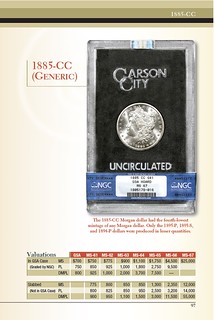
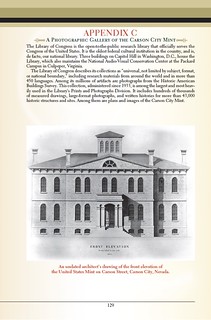
Carson City Morgan Dollars gives detailed advice on ways to collect and enjoy these popular coins:
- Each coin-by-coin entry has a chart of values in Mint State grades, listing prooflike (PL) and deep-mirror prooflike (DMPL) values separately.
- Each “generic” (non-VAM variety) coin has a “By the Numbers” chart, which gives its original mintage, researcher Leroy Van Allen’s published estimate of the quantity in the GSA hoard, rarity rankings for GSA and non-GSA examples, and other useful facts. “Overall Rarity” is the total number of coins estimated to exist for the issue, based on the number found in the GSA hoard, the number certified by professional grading firms PCGS and NGC, the authors’ personal observations of the market, insider information, and auction records.
- A “Condition Census” provides the most reasonable acquisition grade for most collectors. (“Though it isn’t always possible to acquire the highest-graded coins in GSA holders,” the authors note, “it’s still desirable, and fun, to attempt to do so.”)
- “Collector Insights” summarize useful background information on each coin.
- “Variety Notes” supply valuable information on the many die varieties known to exist for Carson City Morgan dollars in GSA holders.
- A “Collector’s Checklist” includes space for collectors to record their purchases and write notes about their coins.
- Illustrated appendices further set the Carson City Mint’s silver dollars in the context of American history and the rare-coin market.
- An index allows the reader to quickly search for terms—from Adams Brick Works to Brigham Young—relating to the Carson City Mint and its silver dollars.
The book’s forewords were written by Coin World editor-at-large Steve Roach and numismatic historian Q. David Bowers, the “Dean of American Numismatics.” Roach calls Carson City Morgan Dollars “a worthy introduction for the new collector and a necessary volume for the specialist,” and Bowers recommends it as a “combination of American history, numismatic research, market reporting, census data, and collector insight.”
Carson City Morgan Dollars, 4th edition
By Adam Crum, Selby Unger, and Jeff Oxman; forewords by Steve Roach and Q. David Bowers
ISBN 079484524X
Hardcover, 6 x 9 inches
160 pages
Full color
Retail $24.95 U.S.
Online at https://www.whitman.com/store/Inventory/Detail/Carson-City-Morgan-Dollars-4th-Edition+079484524X

EL SITIO NO. 25 PUBLISHED
 Number 25 of El Sitio, the electronic magazine of the Instituto Uruguayo de Numismatica, corresponds to the December 2017 edition and has 30 pages containing two feature
articles plus the usual information and news sections.
Number 25 of El Sitio, the electronic magazine of the Instituto Uruguayo de Numismatica, corresponds to the December 2017 edition and has 30 pages containing two feature
articles plus the usual information and news sections.
The first article, by Horacio Morero Ferrero, is part of a series on “Identifying ranch tokens”, and concentrates on shearing tokens from Estancia Los Merinos, a large sheep ranch established in 1863 and owned by the British-controlled River Plate Company.
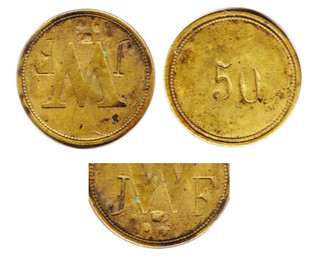 The second numismatic article, by Hugo Mancebo Decaux, deals with the Prizes awarded by the Mercantile College of the Consulate of Montevideo between 1829 and 1838, and in particular the
medals for academic merit given the year 1831.
The second numismatic article, by Hugo Mancebo Decaux, deals with the Prizes awarded by the Mercantile College of the Consulate of Montevideo between 1829 and 1838, and in particular the
medals for academic merit given the year 1831.
A complete account of the “Jornadas Uruguayas de Numismatica 2017” is given in the information section. This Numismatic Convention was held at the Holiday Inn Hotel, in Montevideo, Uruguay, on October 13th, 14th and 15th 2017 and was very well attended. Also, an exhibition of Montevideo Jockey Club medals held at the Maronas racing course is reported and two new numismatic publications are reviewed, a booklet on identifying Macuquina silver pieces by Juan Manuel Trejo, and a new issue of the Revista Numismatica magazine, edited by Nicolas Santerini.
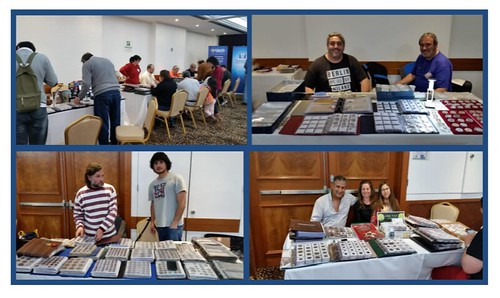
The complete issue can be viewed online (in Spanish) here: http://iunuy.org/flop01/wp-content/uploads/elsitio/ElSitioNº25.pdf
BOOK REVIEW: THE JUDGMENT OF EXPERTS
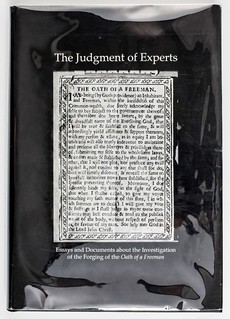 My interest in forgery stems from a college course that touched upon forgeries in early Christian texts. AAS has only furthered my interest in frauds as I began to look for forged items in
the AAS collection. I quickly discovered that fraudulence is not an unheard of phenomenon throughout history. First in my search, and with the help of Assistant Curator of Manuscripts Ashley Cataldo,
I was directed to look into the curious, and unbelievable, case of Mark Hofmann (1954–). His story is one that could fit into the plot of a dime novel or fictional tale.
My interest in forgery stems from a college course that touched upon forgeries in early Christian texts. AAS has only furthered my interest in frauds as I began to look for forged items in
the AAS collection. I quickly discovered that fraudulence is not an unheard of phenomenon throughout history. First in my search, and with the help of Assistant Curator of Manuscripts Ashley Cataldo,
I was directed to look into the curious, and unbelievable, case of Mark Hofmann (1954–). His story is one that could fit into the plot of a dime novel or fictional tale.
Mark Hofmann was a book collector and missionary turned forger and murderer in the mid-1980s. Several of Hofmann’s earlier forgeries purported to be documents of historical importance to the Mormon Church. In 1985, Hoffman showed a New York dealer a small broadside called The Oath of a Freeman. It had been long reported that a printing of the Oath was done in Cambridge, Massachusetts, in 1638/39. This would likely be the first thing printed in America north of Mexico, though no surviving copy was known to exist.
The broadside was offered to the Library of Congress for $1.5 million but ultimately the offer was declined because no conclusive evidence of the document’s genuineness could be found. The Oath was then offered to the American Antiquarian Society, who offered $250,000 with a number of stipulations requiring the dealers to try to establish the broadside’s authenticity at their own expense and to supply information about the owner of the Oath and its provenance. At this point negotiations ended.
Now that the sale had fallen through, Hoffman, heavily in debt, was desperate to free himself. In an effort to mislead authorities, he planted bombs which killed two people. He was severely injured when a third bomb accidentally exploded in his car. Subsequent investigations uncovered the forgeries and led to Hofmann’s conviction. He is now well known as a murderer and forger, yet his faked items have found a market of their own, some selling for hundreds of thousands of dollars.
What I became most interested in after reading about The Oath of a Freeman was the idea that some forgeries could yet have found their way into the AAS collection. With further exploration, I learned that the collection already contained forgeries, frauds, and even counterfeited materials ranging from vouchers, money, and checks to pirated papers, forged signatures, and even portraits. Still, there’s a question of whether or not AAS knew these items were frauds when they were acquired. (Discussions of these materials can be found in the AAS blog series “Fraud Week.”)
Beyond these two examples, interesting still are all of the other materials in the AAS collection related to forgery and counterfeiting, such as counterfeit currency, forged letters and other fakes, and books on counterfeiting and hoaxes. But how does one accurately decipher whether or not something is a forgery? Nowadays, there are many ways to figure out what’s a fraud and what is genuine—namely advanced scientific methods such as ink and paper testing and handwriting analysis. Conversely, however, technological advances have allowed forgers and counterfeiters to create even more realistic duplicates.
Forgeries have a long history, which is one of the reasons why it can be so difficult to tell what is truly real. But to all those historians and collectors out there, don’t worry—fakes can still turn out to be important pieces of history nonetheless. Here at AAS, our frauds have a special place in the collections. After all, they may have shaped the way that history, and the world, both was and is perceived.
To read the complete article, see:
materials in the AAS collection related to forgery and
counterfeiting (https://catalog.mwa.org/vwebv/search?
searchArg=forgery&searchCode=SUBJ%2B&recCount=10
&searchType=3&page.search.search.button=Search)
To read the complete article, see:
Forging History: Making It and Faking It
(http://pastispresent.org/2017/good-sources/forging-history-making-it-and-faking-it/)
To read the earlier E-Sylum articles, see:
MARK HOFMANN FORGERY FOUND? (http://www.coinbooks.org/esylum_v05n19a08.html)
NEW HOFMANN BOOK (http://www.coinbooks.org/esylum_v05n51a07.html)
MARK HOFFMAN BOOK (http://www.coinbooks.org/esylum_v06n01a05.html)
HOFMANN BOOK: THE POET AND THE MURDERER (http://www.coinbooks.org/esylum_v07n23a15.html)
FORGER MARK HOFMANN, TWENTY YEARS LATER (http://coinbooks.org/esylum_v08n44a20.html)
NEWMAN PORTAL ADDS FCCB NEWSLETTER
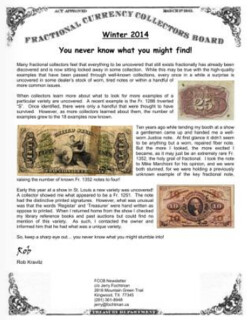 The Fractional Currency Collectors Board (FCCB) has contributed their newsletter for the years 1983-2014 to the Newman Portal. The inaugural issue deals with the usual housekeeping items
(dues, club meeting logistics, etc.) but also includes the lifeblood of any specialty periodical – a new variety discovered, and a rare item appearing in the market. Production values parallel the
rise of desktop publishing, and by the mid-1990s the newsletter boasts a well-illustrated professional appearance. Robert Kravitz also his contributed his reference on the subject, A Collector’s
Guide to Postage & Fractional Currency, in addition to a series of Collector’s Guide updates and a number of fixed price lists. FCCB member Len Glazer contributed the auction sale catalogs and
fixed price lists of his firm Fractional Currency, Inc. Newman Portal acknowledges Jerry Fochtman for coordinating this large addition to NNP, as well as Robert Kravtiz and Len Glazer for their
related contributions.
The Fractional Currency Collectors Board (FCCB) has contributed their newsletter for the years 1983-2014 to the Newman Portal. The inaugural issue deals with the usual housekeeping items
(dues, club meeting logistics, etc.) but also includes the lifeblood of any specialty periodical – a new variety discovered, and a rare item appearing in the market. Production values parallel the
rise of desktop publishing, and by the mid-1990s the newsletter boasts a well-illustrated professional appearance. Robert Kravitz also his contributed his reference on the subject, A Collector’s
Guide to Postage & Fractional Currency, in addition to a series of Collector’s Guide updates and a number of fixed price lists. FCCB member Len Glazer contributed the auction sale catalogs and
fixed price lists of his firm Fractional Currency, Inc. Newman Portal acknowledges Jerry Fochtman for coordinating this large addition to NNP, as well as Robert Kravtiz and Len Glazer for their
related contributions.
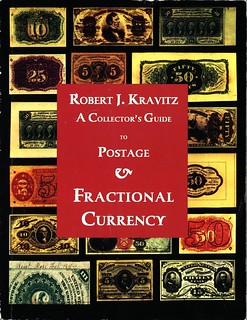
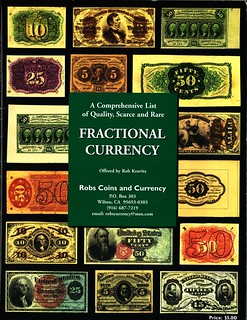
Link to FCCB Newsletter on Newman Portal:
https://nnp.wustl.edu/library/publisherdetail/523621
Link to Robert Kravtiz’s A Collector’s Guide to Postage & Fractional Currency:
https://nnp.wustl.edu/library/book/539489
Link to Kravitz’s fixed price lists:
https://nnp.wustl.edu/library/publisherdetail/523618
Link to Fractional Currency, Inc. auction catalogs:
https://nnp.wustl.edu/library/auctioncompanydetail/510774
Link to Fractional Currency, Inc. fixed price lists:
https://nnp.wustl.edu/library/publisherdetail/523617
NEWMAN PORTAL SEARCH: “SCHOOL GIRL”

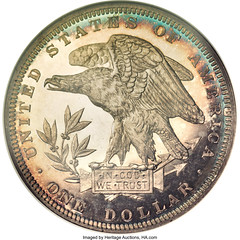
This week a Newman Portal user searched for “school girl,” referring to George Morgan’s pattern dollar of 1879. The earliest use of this term appears to be in the New York Coin & Stamp sale of the Doughty collection (1891), in which an example sold for the extraordinary price of $71.00. This is an important collection of U.S. patterns, 175 pieces in total. The copy scanned by the Newman Portal, from the American Numismatic Society, has this section priced and named. R. Coulton Davis’s earlier catalog of the U.S. pattern series, appearing in the Coin Collectors Journal (1886) doesn’t refer to “school girl” but instead includes a lengthy description of this youthful rendering of Miss Liberty. The Adams-Woodin pattern reference (1913), uses the term “Schoolgirl,” and, once in a standard reference, such a name is likely to stick. Today the issue is highly prized – illustrated here is an example sold by Heritage in January 2009 for $115,000.
Link to New York Coin & Stamp Doughty sale on Newman Portal:
https://nnp.wustl.edu/library/auctionlots?AucCoId=26&AuctionId=513829&page=25
Link to July 1886 Coin Collectors Journal:
https://nnp.wustl.edu/library/book/512354?page=129
Link to Adams-Woodin United States Pattern, Trial, and Experimental Pieces:
https://nnp.wustl.edu/library/book/512406

EDITOR ROBERT R. VAN RYZIN RETIRES
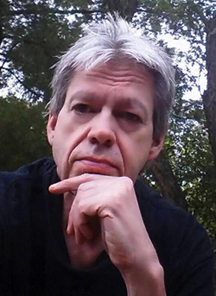 Even though I have often written long feature articles—sometimes covering 10 pages or more—one of the things I figured I would never be able to write on a regular basis was an editorial
such as this. That’s because I feared I would have nothing to say, or that I couldn’t come up with something worthwhile for it on time.
Even though I have often written long feature articles—sometimes covering 10 pages or more—one of the things I figured I would never be able to write on a regular basis was an editorial
such as this. That’s because I feared I would have nothing to say, or that I couldn’t come up with something worthwhile for it on time.
Therefore, it was generally the last thing I did before an issue went to press, whether it be for Coins magazine (for which I’ve been writing one every month for 20+ years) or for its sister publication, i>Bank Note Reporter, which I also edit. But, somehow, I’ve managed, and I hope readers have enjoyed at least some of my efforts.
So here goes for one last time. After 31 years with the firm, having been blessed to have as my profession what was also my passion, I have decided to retire.
I began collecting coins in 1976 after purchasing a copy of Coins off a newsstand in the university town in which I then lived. What attracted me was a headline on the cover of Coins that related that a certain modern Lincoln proof cent was worth $17 or so. This, plus the fact that I had a stash of some old coins, and friends who were avid collectors, encouraged me to buy the magazine.
Soon I was reading everything I could find on the topic. I put together four double-row boxes of coins, including the coins from my stash, and marked and graded each coin as best I could.
I then started attending small coin shows, where I began by buying Franklin half dollars. These I chose because of the series being a bit older and in silver and because they were inexpensive and that’s all I could afford. My 1949-S Mint State-65 Franklin with full bell lines cost me just $60.
I joined Krause Publications in December 1986 as a staff member of World Coin News and began contributing articles to this publication shortly thereafter. My first in this magazine was not on Franklins, but on Kennedy halves.
I have also had stints on Numismatic News, including serving for a period as its managing editor, and as editor of Coins’ former sister publication, Coin Prices. Along the way, I’ve written five books and lots of articles relating to U.S. coins, with a smattering of pieces on U.S. paper money.
Though I started collecting attracted by the thought of making a profit, I came to love the history behind the coin more than its market value. Having completed a master’s degree in history prior to joining Krause Publications, I was always keen on U.S. history and research, and these publications were a perfect match for my interests.
I will forever be grateful to those who hired me and for the chance to have worked with and for many of the hobby’s luminaries here at Krause Publications including, of course, Chet Krause, and plan to continue to be active in the hobby.
Thanks to the readers for your loyalty and to the feature contributors and the staff here in Iola for your help over the years. It’s greatly appreciated.
Happy collecting.
To read the complete article, see:
One more time: Last editor’s letter completes a long journey
(http://www.numismaticnews.net/article/one-time-last-editors-letter-completes-long-journey)
STUNT PILOT COIN DEALER: KEN NICHOLS

Kenneth L Nichols (1902-1974)
Kenneth L. Nichols was born in Victor, Colorado, on October 7, 1902. His father worked for the A. B. Bumstead Co. of Lesher Dollar fame. Ken joined the Navy at age 16 and served on submarines including the U. S. S H-3. After World War I he took flight training and worked as a stunt pilot.
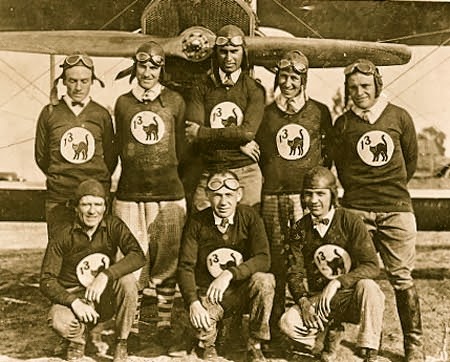
In 1924 he joined two others to form a Union of stunt pilots called “The Black Cats” to perform at air shows and do stunts for the movies. This group grew to be called “The 13 Black Cats.” They wore a circular white patch with a black cat and the number 13. The group was somewhat fluid with pilots coming and going. Each of the pilots had a name with thirteen letters including “Fronty” Nichols.
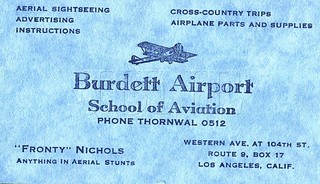
Nichols was co-pilot for Walter Waterman who won the Air Transport Race at the National Air Races in Cleveland in 1929. They flew in a Bach tri-motor. The company closed shortly after the victory.
Nichols learned to ice skate and got a job with Sonia Henie’s Ice shows and later the Evelyn Chandler ice show. He learned to do tricks on a unicycle and a tricycle.
During World War II he worked for the U. S. Navy as an inspector at Lockheed.
 Having survived the life of a stunt pilot and unicycle rider, Nichols took on management of the Cottage Waffle Shop on Balboa Island, California, with his son, Gene. They were coin
collectors and exhibitors who offered a few coins for sale at the counter of the waffle house. Later they became coin dealers with the firm of K & G Coins in Costa Mesa, California. With
assistance from Abe Kosoff, Ken and Gene helped establish a coin exhibit at the Newport Balboa Savings and Loan Association. In 1962 Ken was elected vice president of the Professional Numismatic
Guild (PNG).
Having survived the life of a stunt pilot and unicycle rider, Nichols took on management of the Cottage Waffle Shop on Balboa Island, California, with his son, Gene. They were coin
collectors and exhibitors who offered a few coins for sale at the counter of the waffle house. Later they became coin dealers with the firm of K & G Coins in Costa Mesa, California. With
assistance from Abe Kosoff, Ken and Gene helped establish a coin exhibit at the Newport Balboa Savings and Loan Association. In 1962 Ken was elected vice president of the Professional Numismatic
Guild (PNG).
Coin dealer B. Max Mehl died in 1957. The company name was sold to George Justus who moved operations to Costa Mesa, California. In 1959 the officers for the company were K. L. Nichols, President; Gene Nichols, Vice President, M. L. Justus, Secretary, and A. Kosoff, Treasurer. The Mehl name was used in advertisements through July of 1966.
Gene died of brain cancer in 1960 and Ken gradually retired from the coin business. He died of a heart attack in Laguna Hills, California on September 27, 1974.
Dave Bowers adds:
he regularly made the news in his younger days (before I knew him). He was a very warm, friendly guy!
To read the earlier E-Sylum article, see:
NOTES FROM E-SYLUM READERS: DECEMBER 24, 2017 : Quick Quiz: Stunt Pilot Coin Dealer
(http://www.coinbooks.org/v20/esylum_v20n53a08.html)
NOTES FROM E-SYLUM READERS: DECEMBER 31, 2017
Bob Leuver on Tom Noe
Bob Leuver writes:
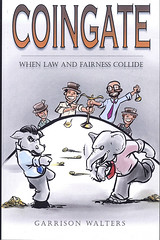 Having spent 16 years in the foreign service and civil service, I understand, but not empathize, with political retribution. My understanding was sharpened as I interacted with the Congress
and was able to plumb the the inherent code of political power. I could cite so many examples to which I was privy.
Having spent 16 years in the foreign service and civil service, I understand, but not empathize, with political retribution. My understanding was sharpened as I interacted with the Congress
and was able to plumb the the inherent code of political power. I could cite so many examples to which I was privy.
Tom Noe did receive a sentence within the law. Was it an excessive sentence? I have always thought so and did write a letter earlier asking for a pardon. Tom overturned the political balance, at least for several years, in Ohio. The Toledo Blade and the authors, who “uncovered” Tom’s crime took particular delight in promoting a sentence that might equate with treason. And, I doubt if the paper and authors will back off now.
Tom is a political captive!
To read the earlier E-Sylum article, see:
NEW BOOK: COINGATE (http://www.coinbooks.org/v20/esylum_v20n53a02.html)
Bob Leuver on Trump's Challenge Coin
Bob Leuver writes:
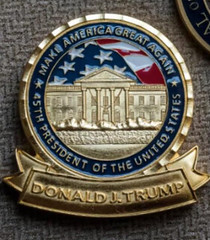 “To the victor’s belong the spoils!” Trump has been assailed by many names and psychological epithets, particularly that of a narcissist. I think the current presidential medal bespeaks the
narcissistic value that the press and his "enemies" tend to heap on him. But, there are aspects of that medal that are relevant to the politics of today and the change that Trump has
accomplished in international relations and domestic programs. No matter your political persuasion, this medal, for the sake of history, will in twenty years, be historically memorable, whereas other
presidential medals will fade as historical, and be only noteworthy to numismatists.
“To the victor’s belong the spoils!” Trump has been assailed by many names and psychological epithets, particularly that of a narcissist. I think the current presidential medal bespeaks the
narcissistic value that the press and his "enemies" tend to heap on him. But, there are aspects of that medal that are relevant to the politics of today and the change that Trump has
accomplished in international relations and domestic programs. No matter your political persuasion, this medal, for the sake of history, will in twenty years, be historically memorable, whereas other
presidential medals will fade as historical, and be only noteworthy to numismatists.
Thanks for your notes! -Editor
To read the earlier E-Sylum article, see:
TRUMP UNVEILS CHALLENGE COIN (http://www.coinbooks.org/v20/esylum_v20n53a20.html)
Brasher Doubloon Novel Brings $10,000
Joel Orosz writes:
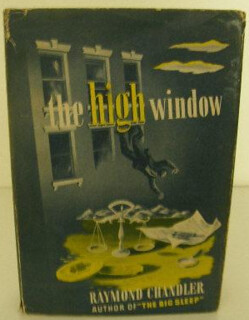 Every year-end, the American Book Exchange (ABE) tallies up the list of their most expensive sales. Although it didn’t quite make the top 20 list, The High Window, by Raymond
Chandler, sold for $10,000, more than a first edition of Dickens’ A Christmas Carol. (See the third and fourth entries under “More Notable Sales” on the linked article). The plot of The
High Window turns around the theft of a Brasher Doubloon. Indeed, when the novel served as the basis for a movie, the film was entitled “The Brasher Doubloon.”
Every year-end, the American Book Exchange (ABE) tallies up the list of their most expensive sales. Although it didn’t quite make the top 20 list, The High Window, by Raymond
Chandler, sold for $10,000, more than a first edition of Dickens’ A Christmas Carol. (See the third and fourth entries under “More Notable Sales” on the linked article). The plot of The
High Window turns around the theft of a Brasher Doubloon. Indeed, when the novel served as the basis for a movie, the film was entitled “The Brasher Doubloon.”
To read the earlier E-Sylum article, see:
AbeBooks' Most Expensive Sales of 2017 (https://www.abebooks.com/collectibles/most-expensive-sales/2017/)
More on the Eliasberg 1872-CC Quarter
Saul Teichman writes:
With regard to the pedigree on the Eliasberg 1872-CC quarter which supposedly came from Isaac Excell, the pedigree in the catalog was incorrect. Clapp actually purchased the Gem Unc piece at the Wetmore sale along with many other CC pieces including the 1870-CC quarter as noted in the named copy on the Newman portal.

If Clapp had purchased one previous to the Wetmore coin from Mr. Excell, it was not the one sold in the Eliasberg sale.
The B.G. Johnson invoices do show Unc 1872-CC quarters.

My quess is the Mehl-Kelly listing which is noted as a Col. Green coin when Mehl had it, was earlier in the Prominent American (Granberg) auction and is likely the piece later in the Norweb collection, probably among the CC mint coins the Norwebs purchased in 1954 which appear to be ex H.M. Budd. The Kagin coin is likely an AU example by today’s standards.
To read the earlier E-Sylum article, see:
ISAAC EXCELL (1846-1925) (http://www.coinbooks.org/v20/esylum_v20n53a11.html)
More on Charity Tokens
"Etienne LePen" writes:
Charity tokens were very common among Jewish Organizations, especially the wearable types (to show that one has given).
In the charity-money range, Jewish orgs had several forms of receipts for payments. One in particular – the Kollel certificate (Kollel being a sort of Yeshiva-School or Madras, dare I say), were so common and so acceptable as payment, that the Czar (or more localized officials) would accept them as tax payments.
Also attached is one of these Charity Chits (small value of 25 Bani=Romania) from the Satmars (city of Satu Mare, as Hasidic Dynasties would usually take their names from the Cities they served), which was both in Hungary and Romania at different times.

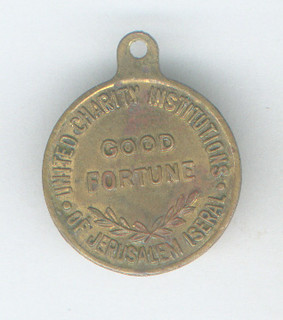
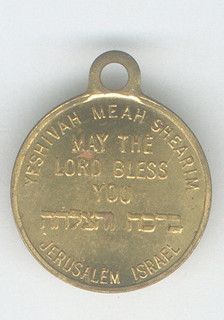
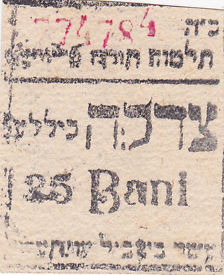
To read the earlier E-Sylum article, see:
1904 Beirut Charity Token (http://www.coinbooks.org/v20/esylum_v20n53a14.html)
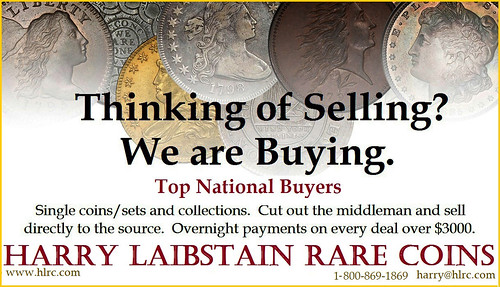
MORE ON THE "MOBILITATE VIGET" VIGNETTE

Tom DeLorey writes:
The boat on the ferry boat chit has neither a side paddle wheel nor a stern paddle wheel, which implies either that it has a screw propeller or that the engraver was woefully incompetent. Assuming it has a screw propeller, that dates it to after 1835, when the first patents for such were filed in England. From what Wikipedia says, the concept did not gain acceptance until 1839, which dates it further.
Any chance it ran up the Hudson River to Albany, or even (though less likely) on the Erie Canal? I know nothing about it, but for some reason my first impression was that it was a canal boat.
Julia Casey writes:
I came across an explanation in: New York City Small Change Bills of 1814-1816 by Eric P. Newman in the Proceedings of the Coinage of the Americas Conference at The American Numismatic Society, New York City, 1985.
DeWitt Clinton, Mayor of the Corporation of the City of New York, announced to its Common Council on August 29, 1814 "that there was at present existing in this City a great pressure for small change" and he urged "the issuing by this Corporation of notes of small amount to obviate this difficulty." The silver and copper coins which customarily were used by the public in the markets and stores had been withdrawn from circulation by merchants and banks because of uncertainties arising by the continuation of the War of 1812. Accordingly a sum of $5,000 in small change notes was authorized, backed by the faith and credit of the Corporation of the City of New York, the highest denomination not to exceed 12 1/2 cents. On September 12, 1814, John Pintard was selected to sign the bills, and the amount was increased from $5,000 to $25,000 with denominations of 25 and 50 cents also approved.
The circulation of small change bills was so successful and well accepted by the public that the Common Council approved $25,000 more on November 21, 1814, and another $50,000 on December 26, 1814, raising the total to $ 100,000 by the end of the year. This was just the beginning.
With denominations ranging from 1 cent to 75 cents, one-half million bills had to be printed, cut apart and signed. On December 26, 1814, Thomas Franklin was authorized to join John Pintard in signing the bills. At the same time a fund for the redemption of the bills was created; the fund to be added to as bills were issued and to be invested by the Finance Committee and the Comptroller in interest bearing securities...
The wear and tear on small change bills used by the public primarily in the food markets was substantial. The dirt from handling grain, produce, poultry, animals and meat, the conduct of business on unpaved streets in snow and rain, and the stuffing of small paper money into pockets of buyers and sellers resulted in the money rapidly becoming dirty, torn, unreadable or worn out. Within two and a half months after the bills were first authorized, arrangements were approved for the city to receive worn out bills and to cancel them. The condition in which the known examples of bills are usually found attests to the difficulty of keeping reasonably clean, undamaged bills in circulation.
Backs were printed only on the 4, 6, 9 and 12 1/2 cent denominations. The denominations of 12 1/2 cents and below are first dated December 26, 1814. Bills of 25, 50 and 75 cent denominations had been issued dated September 12, 1814, which was the date of authorization of the 25 and 50 cent bills, but the 75 cent bill was not mentioned in the Council minutes until November 20, 1815, which was over one year after the 75 cent bills were in circulation. Whether this omission of authorization was an error in transcription is unimportant as no one complained. The bills of 25, 50 and 75 cents were printed on bank note paper and were about 5 inches wide and 2 1/4 inches high. They had blank backs and contained both a printed plate number and a handwritten serial number. All denominations of bills were signed by hand in ink by an authorized signer, of which there were eventually four.
The denominations on bills of 12 1/2 cents or less are printed vertically on each side of the face of the bill, reading upward on the left side and downward on the right side. For this vertical portion each denomination has a different type font. Only 9 and 12 1/2 cent bills have denominations printed on their backs.
The printers named on the small change bills were T. & W. Mercein, 93 Gold Street; T. & J. Swords, 180 Pearl Street; and J. M., 25 Van Dam Street, all of New York City. The only identification of J. M. located in New York City directories of the period is "Miller, John, carpenter, 25 Van Dam." The known plate letters on the bills of 25 to 75 cents range from A to S (including Dd) so that a substantial number must have been printed on one sheet. The observed printed dates on small change bills are September 12, 1814; December 26, 1814; July 3, 1815; January 3, 1816; and July 1, 1816. The size of the 12 1/2 cent and under denominations of the July 1, 1816 issue is slightly smaller than the size of prior similar issues, being about 2 3/8 by 1 5/8 inches and the layout of the text also differs slightly from prior issues.
 The Decorative Backs
The Decorative Backs
The insignia and mottoes on the backs of the small size notes of 4 to 12 1/2 cents are true "folk art." The development of steam navigation on the Hudson River is featured on the back of
the 4 cent bills with an illustration of a steamboat and the motto MOBILITATE VIGET (It thrives through speed);
It's truly miraculous how E-Sylum readers can come up with spot-on answers to the most obscure numismatic questions imaginable. It's as if we have an angel in heaven looking out for us. Thanks Tom, Julia, ... and Eric! -Editor
To read the complete article, see:
http://numismatics.org/digitallibrary/ark:/53695/nnan115544/pdf
To read the earlier E-Sylum article, see:
NOTES FROM E-SYLUM READERS: DECEMBER 24, 2017 : Ferry Boat Ticket Information Sought
(http://www.coinbooks.org/v20/esylum_v20n53a08.html)
UNSOLVED RIDDLES OF THE CONTINENTAL DOLLAR
The January 2018 issue of The Numismatist has an article by Erik Goldstein and David McCarthy, “The Myth of the Continental Dollar,” which makes the same arguments for the Continental Dollar being issued in 1783 as I did in my E-Sylum post, READER THOUGHTS ON CONTINENTAL DOLLAR ORIGINS. They add, however, that on April 2, 1783, Robert Morris, Superintendent of Finance of the United States, noted that the initial Nova Constellatio pattern he received was “the first that has been struck as an American Coin”—further evidence that the Continental Dollar was not made before then (p. 53).
David McCarthy is particularly concerned that Continental Dollars not be given priority over the 1783 Nova Constellatio 500-unit (“quint”) pattern that he identified as the “First American Coin” in a profusely-illustrated (and convincing) article in the August 2017 issue of The Numismatist, written by him with editorial assistance from Donn Pearlman. So he might be considered biased; not so Erik Goldstein, Senior Curator of Mechanical Arts & Numismatics. at the Colonial Williamsburg Foundation. In any case, their arguments are solid.
But many mysteries remain. Here are some unanswered questions about the Continental Dollar:
- Is the ornamental edge on some Continental Dollars found on any other medals or coins?
- Was the Continental Dollar struck after or before the tin 1783 Treaty of Paris medal with the same error regarding the placement of the states?
- Who was E.G.? (Erik Goldstein, in a private email, agrees with me that it was likely someone either British or European)
- Who made the Continental Dollars?
- Were they presented to an influential American for acceptance as an American coin? If so, who?
- Were they restruck for sale to British collectors?
The impressive Continental Dollar is a highlight of any fine collection of 18th-century American numismatics. All students of Colonial Era currency crave answers to these questions.
To read earlier E-Sylum articles, see:
READER THOUGHTS ON CONTINENTAL DOLLAR ORIGINS (http://www.coinbooks.org/v20/esylum_v20n45a21.html)
ROB RODRIGUEZ ON THE CONTINENTAL DOLLARS (http://www.coinbooks.org/v20/esylum_v20n44a13.html)
ONGOING THOUGHTS ON THE CONTINENTAL DOLLAR (http://www.coinbooks.org/v20/esylum_v20n43a12.html)
VOCABULARY TERMS: ALL ABOUT DIES
Die Terms Since coins and medals are formed of metal, the metalworking field has a large number of terms with Die in their name. There are 61 such terms. Numismatists use these terms and have added terms of their own in describing and conversing on coins and medals. There are 37 such numismatic terms. Both categories are necessary and included in the Encyclopedia of Coin and Medal Technology.
To find the full entry of any term – like the one on Jack Die in last week’s E-Sylum – see the Newman Portal under Dictionary.
Metalworking Terms
Back Die, Bar Die, Blank Die, Blanking Die, Broken Die, Canceled Die, Cast Die, Clashed Dies, Coining Dies, Collar Dies, Combination Die, Corroded Die, Copy Die, Cracked Die, Die Adjustment, Die
Alignment, Die Blank, Die Block, Die Camber, Die Cavity, Die Clearance, Die Draw, Die Erosion, Die Forging, Die Life, Die Mold, Die Number, Die Set, Die Shoe, Die Wear, Die Vault, Diebreak, Die-cast,
Diechip, Diecutting, Dieshell, Dieshift, Diesinking, Diestock, Diework, EDM Die, Embossing Dies, Forming Die, Gauge Die, Insert Die, Intaglio Die, Jack Die, Machined Die, Master Die, Open Face Die,
Progressive Dies, Proof Die, Rusted Die, Shattered Die, Starting Dies, Stock Die, Striking Die, Sunken Die, Tool and Die Work, Transfer Die, Working Die, Year Die
Numismatic Terms
Blundered Die, Broken Die, Cameo Die, Chipped Die, Common Die, Die Adjustment Strike, Die Bulge, Die Retention, Die Clash, Die Flaw, Die Forged, Die Line, Die-linked, Die Retooling, Die Scratch, Die
Stamped, Die State, Die Trial, Die Variety, Diecrack, Filled Die, Hinged Die, Mated Dies, Misaligned Die, Nonsense Die, Obsolete Die, Polished Die, Proper Die, Service Pin Die, Refurbished Die,
Retouched Die, Rim Diebreak, Rocker Die, Roller Die, Rotated Die, Tipped Die, Worn Die
Looking for the meaning of a numismatic word, or the description of a term? Try the Newman Numismatic Portal's Numismatic Dictionary at: https://nnp.wustl.edu/library/dictionary

WHY JANVIERS SHOULD NOT BE SCRAPPED
In my ongoing research of die-engraving pantographs, particularly the Janvier, I have learned an increased number of mints around the world have mothballed their Janviers or similar machines. They are being replaced, of course, by computer engraving.
The old “clay and plaster” models are being replaced by the new technology of computer design and computer-controlled milling of dies and hubs. Victor Janvier is turning over in his grave. We can sympathize with him, but we cannot fault technological advancement.
Janvier’s engraving machines dominated minting and coining in virtually every mint in the world for the 20th century! All other engraving machines (transfer lathes) and techniques pale in comparison, Save one: hand engraving. But engraving by hand was tedious and time consuming and could only create one size die at a time. The Janvier pantograph was the machine to have.
Yet today engraving machines stand idle in storage until they are sold to used machine dealers. Senior coin and medal artists miss using them and the technology they employed. They recognize, however, they must adapt to the new technology or be left behind.
Granted, computer design and milling are accomplished in a third of the time or less. As mints are grinding out new coins at an increased pace, the computers are absolutely necessary. Mints now are factories, guided by tight cost controls. Accountants rule.
There is, however, a subtitle difference in the artistic look of coins and medals produced between the two techniques. For years no one, it seems, could pinpoint what that difference was. Only recently it has been stated in words. These should be emblazoned on a sign in every mint director’s office:
Computer generated models are digital
Analog is better artistically.
Why? Analog relief in models is a smooth, continuous surface. Digital’s surface relief is composed of super tiny rough planes. To the human eye the difference is nonexistent. To the trained eye the difference is evident. The effect is subtly more artistic.
Give a commission to an experienced medallist, even a fine artist, with ample time to form a design to the best of his or her creative ability, then modeled – yes, in clay and plaster – and a die cut of that model on an old fashioned Janvier and you will have a superb coin or medal with all the fine detail the artist demanded. The result will be an immensely superior piece in contrast to a production line model.
Before the last Janvier is disposed, one should be retained to create an occasional highly artistic coin or medal. Accomplished medallists should be commissioned – with ample time – to prepare their clay and plaster models to be processed on that lonely Janvier. It aids in creating a better design.
Mints can grind out computer-generated models as they must. But please don’t overlook an occasional super artistic piece. Don’t let this rare art form drift into meritocracy.
Also, what should be done with those additional Janviers? Instead of disposing them to used machinery dealers, why not sell them to medallists who could use one in their own studio. There is a strong precedence for this. In the past it was medalists who made their own bas-relief reductions. William Wyon was one of these, he owned several, even while he was a Royal Mint engraver.
But please, don’t scrap those Janviers.
As a student of the history of business and technology, I know that older technologies rarely disappear completely, but instead come to address new niche markets. Television didn't kill radio and the Internet hasn't killed off print publications. So I agree that mints and the minting industry in general should absolutely retain its equipment and expertise for analog production even if it is only for a small subset of output. Medallists, museums, historical societies and even mechanical engineering schools could be fine homes for the Janviers that aren't retained for specialty production uses. -Editor
Dick Johnson adds:
I asked Heidi Wastweet to comment on my article on Janvier machines destruction. Heidi is an experienced sculptor specializing in relief sculpture. She is currently president of American Medallic Sculpture Society, and a member of the U.S. Mint’s Citizens Advisory Committee. Her comments follow (italics mine).
Heidi Wastweet writes:
You say clay and plaster is being replaced by computer design. Indeed, engraving machines are becoming nearly obsolete, but clay and plaster is not. It is perfectly compatible with the new digital technology. Your article implies that if a person wants the more artistic hand sculpted plaster model (and I fully agree with you that it is still superior to digital sculpting) they then have to find a Janvier machine to cut it on. I still do all my models in plaster and I have no trouble getting dies cut with the new CNC milling technology. In fact I personally prefer it. Here’s why ...
When Janvier machines first came into use, the models were all galvanos. They were perfect and durable but time consuming to make. Then came the invention of epoxy. It was a cheap and easy substitute for galvanos and soon all the mints were using it. The trouble was that the stylus of the Janvier would wear down the less durable epoxy models and the finished die lacked sharpness. Today, I don’t know of a single source for getting galvanos made. Maybe you know someone?
To truly make the most of these old engraving machines, the dedicated craftsman would need to also bring back the galvano.
In the absence of galvanos, the laser scanners are doing a fine job. They scan directly off the plaster without any damage at all. From there the computer then drives the die engraving [milling] with precision. In the wrong hands, a Janvier can produce a terrible quality die, while the CNC is more idiot-proof.
The downside is that the expense of the digital system vs the cost of a Janvier keeps it out of the hands of the individual artists and minters. I think it would be nice to let those old machines go to the small shops who want to keep it alive.
Thanks for the great read. I’m glad to see someone bringing up this topic.
ALBERT HIRSCHFELD (1891-1972)
Albert Hirschfeld (1891-1972), was born September 6, 1891 at Ribben, Germany (then Prussia), son of Solomon Hirschfeld (1852-1927) and Lina Levine Hirschfeld (1854-1924). He came to America on September 27, 1913 settling at first at Galveston, Texas. He began a career in America as a jeweler.
He and his wife Lena were great patrons of the arts and museums establishing the Albert & Lena Hirschfeld Charitable Trust incorporated at Dallas, Texas. For fifteen years he was the president of the San Antonio Museum Association and chairman of the board of the Witte Museum. He also served on the boards of the San Antonio Symphony and the San Antonio Art League. Among his charitable organizations he served o the board of Madonna Neighborhood Center, the Guadalupe Community Center, Goodwill Industries, and the San Antonio Association for the blind.
In March 1963 he donated 560 coins to the Witte Museum, San Antonio, Texas, which he kept in the Museum safe for years. In the collection 194 coins were foreign. Among them 46 coins were minted after 1933. The Witte Museum, was established in 1926 under the charter of the San Antonio Museum Association. The Witte Museum is located next to Brackenridge Park, San Antonio, Texas, on the banks of the San Antonio River.
On August 13, 1963, three months and nine days prior to the assassination of President John Fitzgerald Kennedy United States Customs officers entered the Witte Museum with warrants to seize 21 gold coins of the 46 minted after 1933 they claimed were illegally imported into the United States under the provisions of the Gold Act of 1933 signed by President Franklin Delano Roosevelt. The seized coins were minted in Mexico, Switzerland, Iran, Saudi Arabia, Peru, Bolivia, Syria, Dominican Republic, Luxembourg, Rumania, and Turkey. Dr. William A. Burn, Director of the Witte Museum protested and appealed to the public to write the Vice-President petitioning the 21 gold coins be returned.
He died of a heart attack on April 8, 1972. He was buried on April 11, 1972, at Congregation Agudas Achim Cemetery, North Palmetto Street, San Antonio, Bexar County, Texas.
To read the complete article, see:
HIRSCHFELD, ALBERT
(https://sites.google.com/a/numismaticmall.com/www/numismaticmall-com/hirschfeld-albert)
The entire inventory of the Lupia Numismatic Library is for sale. Individual items will be available before the remaining archives are broken up into parcels sold at philatelic auctions in the U. S. and Hong Kong. Check NumismaticMall.com frequently as dozens of new items with estimates will be posted daily until everything is sold.
All inquiries will be given prompt and courteous attention. Write to: john@numismaticmall.com .
HARVEY STACK'S NUMISMATIC FAMILY, PART 8
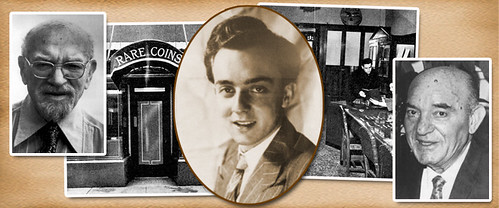
By 1950, we in the coin business had seen many changes. The post-war period brought many coins from overseas to our shores. Servicemen who were in the war returned home with packages and in some cases duffle bags of coins. Museums and private collections were destroyed by the war and among the ruins were coins scattered about. Many of these came to our shores and were sold. Those that were silver and gold had intrinsic value, and those of obvious scarcity and rarity had more value. So in a few years the market here in America was flush with coins from all ages, ancient to modern times.
In addition, the U.S. Mint made several new commemoratives. One was for the State of Iowa, in 1946, and this issue spurred interest in classic commemorative half dollars, the 47 different issues struck from 1892 to 1939. Collectors flocked to add them to their sets. Also from 1946 to 1951 a series of commemorative half dollars honoring Booker T. Washington was struck each year at all three U.S. mints, and in 1951 the Carver-Washington commemorative half dollars were struck, also at three mints. These were issued until 1954. Again, the more designs offered the more the interest grew.
In 1950, the U.S. Mint decided to start issuing Proof sets containing coins of each denomination from the cent to the half dollar. Proof set production had been suspended due to the war after 1942, and none were struck until 1950. The new sets were sold for $2.10 each, which included 91 cents in face value. Reasonably priced, for sure!
Also starting in 1946 the U.S. Mint issued a newly designed dime with the portrait of Franklin Delano Roosevelt. These were struck at three mints and became favorites of new collectors who sought them out in change. The same thing occurred when the Benjamin Franklin half dollar was issued starting in 1948. These series gave collectors the opportunity to start with the very first years a design was issued.
All of these things contributed to growing interest in collecting coins and the collector base expanded. Of course, the nation’s economy improved after the war and more people had money to pursue numismatics.
All this increased demand for service at Stack's and we expanded the staff to be able to serve all. Many collectors came to Stack’s, mostly on weekends, to help sort coins, catalog them, and also learn more about areas they were interested in.
The business demanded many different skills and a certain level of flexibility. It was important to take advantage of opportunities as they came up. My uncle, Joseph, hated to drive so when he got a call from an old bank in Bridgeton, New Jersey, he got my father, Norman, to drive him there. The bank had been established in 1830. When they arrived at the bank they were shown bags of silver coins that, according to the banker, had been there since 1836 or so. In the bags they found hoards of half dollars dated before 1837, the date when the design was modified, the edges milled, (rather than lettered) and the weight of the coins reduced. It seems the early bankers had decided to save all the earlier half dollars that came in the bank, thinking their higher weight might make them more valuable later on. Joe and Norman bought over 10,000 specimens from the banker, as the numismatic value in 1950 was quite a bit greater than the silver content. So they paid the banker, thanked him for calling, and the two drove back to New York, where the rest of us in the store were amazed.
These half dollars were sorted first by date, by grade and by obvious varieties, and were placed in 2 x 2 envelopes with the date and grade on the outside. We started to offer these for sale in our price lists and auction sales. No one could believe how many we had; it was a great numismatic find. Al Overton, a dealer, collector and author who specialized in these coins, visited Stack's a number of times, to review the issues prior to 1836 and record many of the varieties that showed up in this hoard, He later included these in his important reference book on early half dollars.
To read the complete article, see:
Growing up in a Numismatic Family Part 8 (http://www.stacksbowers.com/News/Pages/Blogs.aspx?ArticleID=2792)

MORE ON BANKNOTE ENGRAVER ROBERT SAVAGE
Gene Hessler writes:
Savage is listed in my book The Engraver's Line (TEL), however, his year of death is 1943. Savage gave up his supervisory position to Edwin Gunn in the mid-1920s, but continued to engrave for ABNCo to the time of his death. Savage is also mentioned in Mark Tomasko's Images of Value, The Artwork Behind US Security Engraving 1830s-1980s.
John Lupia writes:
As a fellow art historian and admirer of Alphonse Mucha here is a biography on Robert Savage, the foremost engraver in American history.
Robert Savage is one of the most distinguished American engravers of all time. He engraved postage stamps for several countries, bank notes and paper money for more than 31 countries, and corporate bonds, and stock certificate vignettes during his tenure as an engraver - becoming Chief Engraver of the Picture Engraving Department of the American Bank Note Company (ABNC).
To read the complete article, see: SAVAGE, ROBERT (https://sites.google.com/a/numismaticmall.com/www/numismaticmall-com/savage-robert)
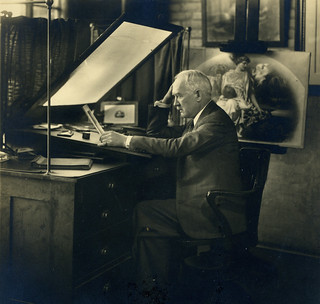
Image courtesy Mark Tomasko
Mark Tomasko writes:
Robert Savage (1868-1943) is widely considered the finest bank note picture engraver of the twentieth century. He worked at American Bank Note Company for 52 years, from 1891 to his death in 1943. He was head of the picture engraving department at ABN in the early twentieth century but gave up the title in 1923 to Edwin Gunn, his longtime colleague (and almost his equal) though he continued to engrave for American to the end of his life. He never retired.
Some of his best portraits include Sun Yat-sen, appearing on countless Chinese bank notes; the gypsy girl on the Mexican 5 peso note of 1925 into the 1930s; Grand Duchess Charlotte of Luxembourg on notes from the 1930s-1940s; Slavia on the Czech 100 korun note; and the vignette "France" from artwork by A. E. Foringer. There are countless other fine engravings. For a lengthy list of some of his work, see Gene Hessler's The Engraver's Line and the accompanying supplement.
To read the earlier E-Sylum article, see:
BANKNOTE ENGRAVER ROBERT SAVAGE INFO SOUGHT (http://www.coinbooks.org/v20/esylum_v20n53a13.html)
MORE ON THE ROBERT SAVAGE EDWARD VIII PORTRAIT
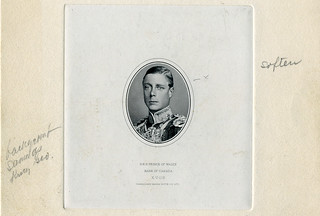
ABOVE: Prince of Wales 116; BELOW: King Edward VIII 116A
Images courtesy Mark Tomasko
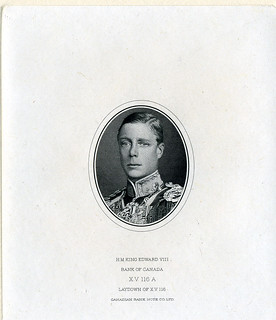 Readers might be interested to know that the Robert Savage portrait of Edward VIII was originally done in 1934 for the first $5 Bank of Canada note. The die proof (see scan) reads "HRH
Prince of Wales/Bank of Canada/XV-116." When the $5 note was awarded to British American BN, the portrait was not used. However, when the 1937 series notes were being prepared, $1 models
(paste-ups) were made using XV-116. Simultaneously, however, the XV-116 portrait was being redone by Savage, using a darker background, (see pencil notation on XV-116 proof, "background same as
King Geo") becoming XV-116A, labeled "King Edward VIII" (see scan). Walter Allan, the great Canadian bank note researcher, published two heavily illustrated articles on the 1935 and
1937 issues of the Bank of Canada in The Canadian Paper Money Journal illustrating four photographs of $1 models using Edward VIII (in the 1994 Journal article on the 1937 Series).
Readers might be interested to know that the Robert Savage portrait of Edward VIII was originally done in 1934 for the first $5 Bank of Canada note. The die proof (see scan) reads "HRH
Prince of Wales/Bank of Canada/XV-116." When the $5 note was awarded to British American BN, the portrait was not used. However, when the 1937 series notes were being prepared, $1 models
(paste-ups) were made using XV-116. Simultaneously, however, the XV-116 portrait was being redone by Savage, using a darker background, (see pencil notation on XV-116 proof, "background same as
King Geo") becoming XV-116A, labeled "King Edward VIII" (see scan). Walter Allan, the great Canadian bank note researcher, published two heavily illustrated articles on the 1935 and
1937 issues of the Bank of Canada in The Canadian Paper Money Journal illustrating four photographs of $1 models using Edward VIII (in the 1994 Journal article on the 1937 Series).
The tintype illustrated in last week's article looks like another photograph of a model similar to Figure 5 (without the tint) of Allan's 1994 CPMJ article. I am puzzled by the term "photographic tintype proof;" it appears to simply be a photograph of a model, of which Allan illustrates four examples in his article. Those are paper photographs, but it's not evident what the significance of a positive tintype is (tintypes are usually reverse images) versus a paper photograph. I know the use of regular (reverse image) tintypes.
In any case, Robert Savage's The Prince of Wales/King Edward the VIII portrait twice came close to being used by the Bank of Canada and twice was not used. The first time, ABN/CBN did not get the order for the $5 denomination in 1934. The second, and final time, the abdication of King Edward VIII in late 1936 made the portrait obsolete. It appears that no master die of a $1 note using the Edward VIII portrait was ever made, and hence no proofs. We can only enjoy the photographs of models of the proposed note.
To read the earlier E-Sylum article, see:
UNISSUED EDWARD VIII NOTES HIGHLIGHT REGINA SHOW (http://www.coinbooks.org/v20/esylum_v20n53a18.html)
1859-S COINAGE AND TRADE WITH CHINA AND JAPAN

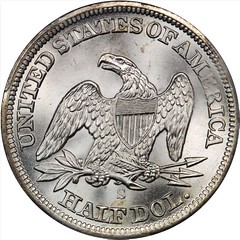
1859-S Liberty Seated Coinage; Miscellaneous Research Passages.
Dan Owens
1859-1860
In 1859-1860, silver was received on deposit at the San Francisco Branch Mint if it was to be manufactured into refined bars or Seated dollars. If its intended purpose was for other coins it was
purchased. This was reflected in the Register of Silver Bullion Deposits under the category of remarks.
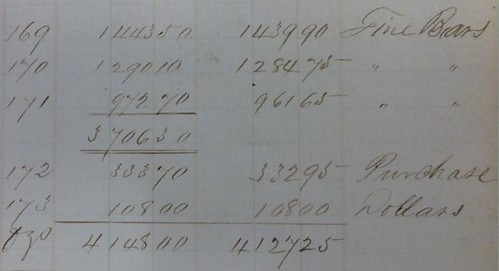
The Sea Serpent
To give the reader a better glimpse of the treasure trade with China, I took a detailed look at the sailing ship Sea Serpent which cleared San Francisco on February 21st, 1859, with a
significant amount of treasure bound for Hong Kong via Honolulu. A number of Chinese and American commission merchants had shipments below her decks consisting of gold bars, Mexican dollars, gold
coin and dust, silver bars and surprisingly $10,000 in U.S. silver coin consigned to banker B. Davidson.
Perhaps he was testing the waters so to speak, with U.S. silver dollars or more than likely he was trying to unload excess silver half dollars. On her previous voyage to Hong Kong the Sea Serpent returned with goods like tea, sugar and rice.
The Onward and the Page carried 68,000 Seated Half Dollars to Japan
Two notable examples of Seated half dollars being shipped to the Orient include the Clipper barque Onward which sailed from San Francisco on September 3rd, 1859, for Japan with $22,000 in
American half dollars (44,000 pieces) and the schooner Page which sailed on the 5th for Hakodadi, Japan with $12,000 or 24,000 American half dollars.
Hakodadi, Japan was the site of the Custom House, where American silver coins were exchanged for Japanese silver coins which in turn were used by the American merchants directly in their trade with Japan.
I expanded my search to include the years 1860 and 1861 and found strong evidence of their continued appearance in Japan. Not surprisingly, these pieces always seemed to trade at a discount or at times were only accepted for harbor dues and duties.
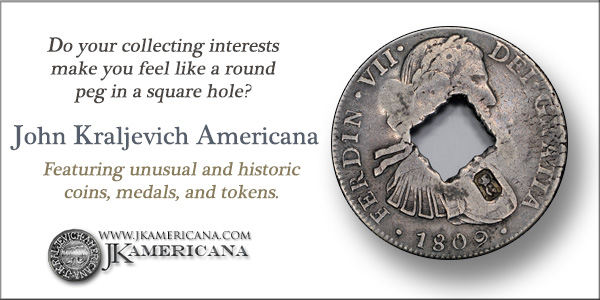
TOM BABINSZKI VISITS INDIA
It started about a year ago when I was first asked to do some work in India. After much preparation, I spent almost two weeks in Bangalore, and some days in Visakhapatnam and Pune. In general, I try to prepare for my trips by reading about the place I’m going to. Sometimes I do very poorly, but I tried to take India seriously.
I talked with people, read some articles, and books. My favorite was Ervin Baktay’s book about his three stay in India. This Hungarian orientalist spent three years in India between 1926 and 1929. It is almost a century later now, but the concepts were interesting, and in case of such a rich and ancient culture, or should I say cultures, a hundred years should not matter much. It was fascinating to read about the different religions and how they coexist together in India. Baktay’s book was the most helpful throughout my trip. I of course, also prepared numismatically, which wasn’t as easy as it seemed originally.
I started by contacting as many places as I possibly could research. Coin clubs, coin stores, online forums. I am disappointed to say, aside from the Falcon Coins Gallery in Bangalore, nobody got back to me.
The next difficulty was learning about Indian coinage. There are some materials out there, but the information is vast, and is hard to find. The best resource I found was the Mintage World site. I wrote about it last year. They have quite a bit of materials about the different Indian states, sultanates and historical periods.
It was my first time visiting India, it is a fascinating country. I really enjoyed talking with the people, exploring the culture and the food. But as always, work was first priority.
I was surprised to find that the hotel didn’t have coins. I went to the bar just so that I could pay with cash, I had beers in the minibar, and I was way too tired, but I couldn’t miss a chance to get some coins on the first day. However, instead of coins for change, I got more money back in bank notes. When I asked for change, in English, because all the people knew English at the hotel, they told me they didn’t have any, I had to go to the bank. So much about collecting…
On my first free evening, where else could I go, I visited the largest local coin store, the Falcon Coins Gallery, the only place who wrote back when I contacted them. I called an Uber and got there in about 15 minutes.
Coincidentally, it was The feast of St. Eligius, the patron saint of numismatists, as I found out that day from my friend on Twitter. He sure made my day…
It felt like a regular shop off the street, it wasn’t hard to find. One of the owners, Mr. Parekh set down with me at the table and showed off some interesting Indian coins. I tried to moderate my purchase, first of all probably it wasn’t the cheapest place, as it was a high end store, and there is no need to buy everything at the same time, especially that I didn’t even know about most of the coins. The history of coinage in India is just vast. However, I have to say, the prices were very reasonable, and Mr. Parekh’s knowledge about the coins was amazing. I would have paid just to be there. It was interesting to touch some of the Indian coins I have read about, and a few more I never knew existed. I bought a variety of coins, in particular trying to get ones which are easiest to feel.
Mr. Parekh showed me some nice old coins, but mostly we looked at the ones from the last two centuries.
I got two books, one about the coinage of Karnataka, which is the state where I was staying, and a general introduction to the coins of India. Probably the best thing I can get from a country’s visit.
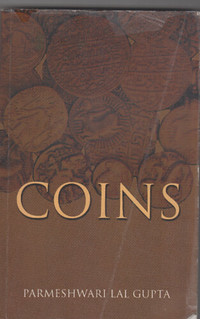

After I made the payment, they offered a tea, and called Mr. Kirti M Parekh, who is the father of the gentleman whom I was working with. he is the president of the Karnataka Numismatic Society. We talked a little about collecting and took a picture, all three of us.
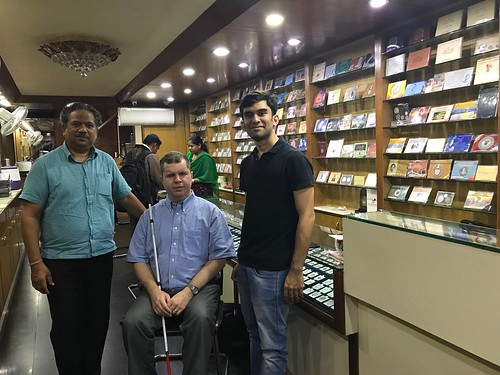
It was the tenth day in the country and I haven’t seen a circulating coin yet. It is time to do something about it. I tried to ask for coins, at the hotel it doesn’t exist, people don’t use it. I haven’t heard coins where people were paying, but it is also true that I haven’t been around cash registers much. I either got food or coffee at work, or it got written up to my room. I’m mostly using bills for tips. I asked around a bit, but nobody had coins. I can’t just leave India without circulating coins if they exist, so today I stopped by the bank on the way from work to pick up a few.
Overall, personally, professionally and numismatically, it was a great trip. I came home with a few interesting coins, and I’m looking forward to reading the books I got.
To read the complete article, see:
Collecting in India (http://blindcoincollector.com/2017/12/20/collecting-in-india/)
SELECTIONS FROM LEGEND REGENCY AUCTION XXV
Legend Rare Coin Auctions will be conducting its 25th Regency Auction on January 25, 2018 in conjunction with the PCGS Members’ Only Show at the Luxor in Las Vegas. The 349 lot auction begins with the Ipswich Collection of three cent silvers. From there, the firm presents high grade and high end quality issues from the early days of the first U.S. mint in Philadelphia to rare key date issues of popular 20 th century series.
Lot 21--3CS 1867 PCGS MS67 CAC From the Ipswich Collection
Lot 28--1/2C 1797 C-1. 1 ABOVE 1. PCGS MS66 BN CAC Ex Missouri Cabinet
Lot 35--L1C 1793 WREATH VINE AND BARS. PCGS MS64+ BN CAC
Lot 49--1C 1856 FLYING EAGLE PCGS PR64 CAC
Lot 99--5C 1916 DOUBLE DIE OBVERSE. PCGS MS64 CAC
Lot 100--5C 1918/7-D PCGS MS65+ CAC
Lot 116--10C 1796/5 PCGS MS64+ CAC EX ELIASBERG
Lot 148--25C 1834 PCGS MS65 CAC
Lot 181--50C 1812 PCGS MS65+ CAC
Lot 209--$1 1852 ORIGINAL. PCGS PR65 CAC
Lot 233--$1 1893-CC PCGS MS64 CAC
Lot 262-- G$1 1860 PCGS PR65+ CAM CAC
Lot 271-- $5 1802/1 PCGS MS64+ CAC
Lot 303-- $20 1920 PCGS MS65
Lot 345-- $1 1836 J-65. RESTRIKE PCGS PR64+ CAC
To view these, and all coins offered in the Regency Auction 25, check out www.legendauctions.com to register and bid. Catalogs are in production and will be mailed during the second week of January. Selected highlights will be on display at the FUN show and Legend Auctions will be conducting a special lot viewing session in conjunction with the 2018 New York International Numismatic Convention on Friday, January 12 at the Grand Hyatt. For more information, call 732-935- 1168 or email info@legendauctions.com.
Lot 35: 1793 Wreath Cent
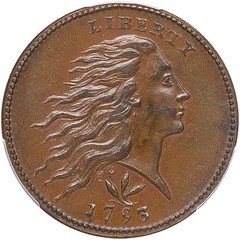
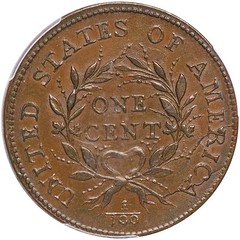
Lot 46: 1839 Silly Head Large Cent
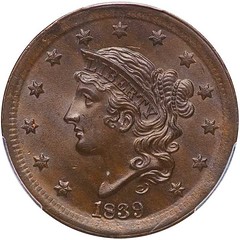
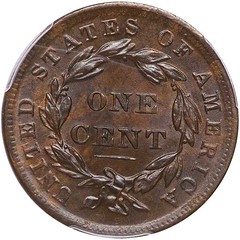
Lot 127: 1895-O Barber Dime
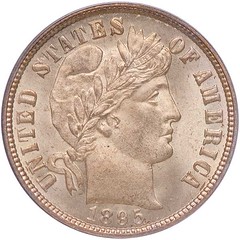
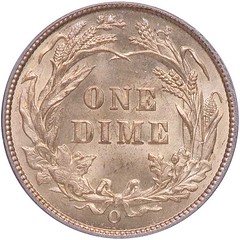
Lot 181: 1812 Bust Half Dollar O-103
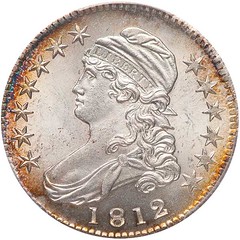
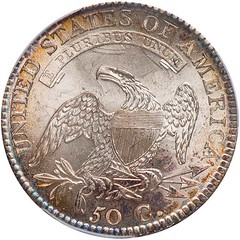
Lot 322: 1936 Oregon Trail Half Dollar
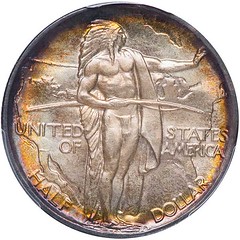
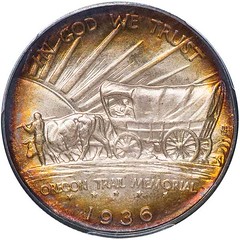
NUMISMATIC NUGGETS: DECEMBER 31, 2017
Victoria Model Crown
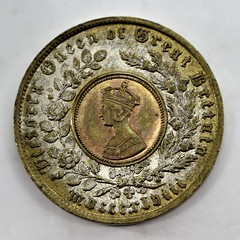
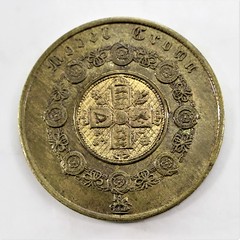
Great Britain - Model Crown Token Victoria
To read the complete lot description, see:
Great Britain - Model Crown Token Victoria
(https://auction.catawiki.com/kavels/15774507-great-britain-model-crown-token-victoria)
To read the complete article, see:
1848 Model Crown (https://forums.collectors.com/discussion/779818/1848-model-crown)
1874 Twenty-Five Cents Fractional Note
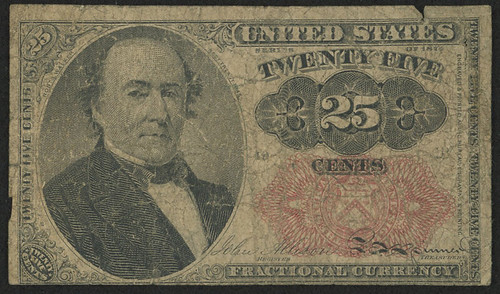
To read the complete lot description, see:
1874 United States 25¢ Twenty-Five Cents Fractional Bank Note
(https://www.pristineauction.com/a1269411-1874-United-States-25-Twenty-Five-Cents-Fractional-Bank-Note)
WWI Grand Duchy of Baden Medal
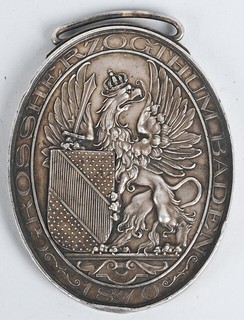
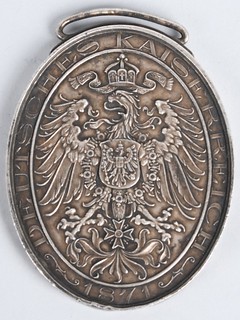
Description: Large presentation medal from Imperial Germany the State of Grand Duchy of Baden. Metal has Imperial logo on one side and Griffon logo on the other. All original with nice details. 3 1/2"
To read the complete lot description, see:
Lot 223C: WWI GERMANY GRAND DUCHY OF BADEN MEDAL (https://www.invaluable.com/auction-lot/-1-c-CAF438DBD9)
1938 Mooseheart Medal
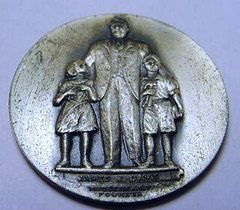
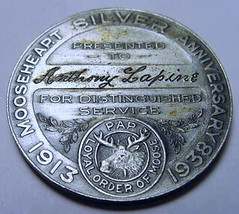
To read the complete lot description, see:
Lot 387: 1938 MOOSEHEART MEDAL (https://www.invaluable.com/auction-lot/-1-c-7BC4033896)
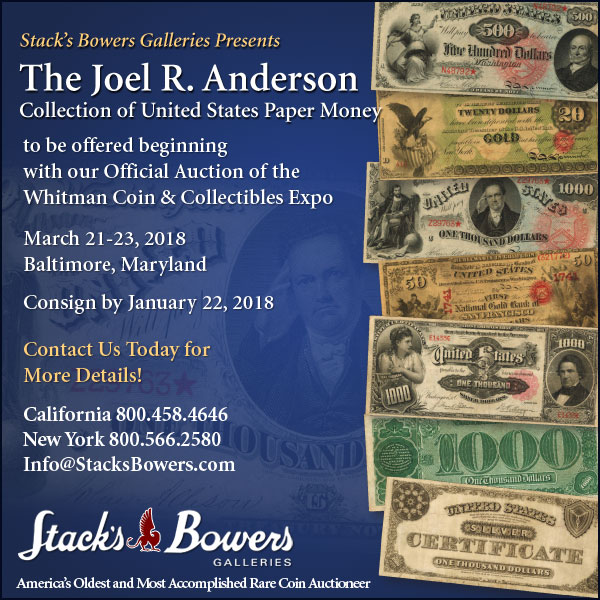
THE ANILLO TOKEN RESTRIKES
Chriss Christiansen, TAMS #1718
Much has been said in the past few months, pro and con, of the batch of tokens that recently came on the market, and which were sold by Anillo Industries Inc. of Orange, California. What are these aluminum chits to be called? This is anyones prerogative in determining what they are. The following is a little background data on what has transpired:
 1 — The dies originally belonged to the now defunct L.A. RUBBER STAMP CO. or L.A.R.S.
1 — The dies originally belonged to the now defunct L.A. RUBBER STAMP CO. or L.A.R.S.
2 — Anillo purchased these dies at an auction of the LARS Co.
3 _ In order to find out what they had purchased, they made a Trial Stamping of the dies and from there were possibly persuaded by a few well known collectors that enticed Anillo into stamping out approximately 32 sets, of 3500 tokens to a set.
4 — TAMS was contacted about running an ad in their Journal, but because of the Policy set down on Restrikes, refused the Anillo ad, however, ANA saw fit to accept their ad along with another minor publication.
5 — Each token is aluminum, various sizes, all uniface (one-sided) and mostly all from California, some from Arizona, Texas, New Mexico, Nevada, Washington and South of the Border.
6 — They originally sold at $250.00 a set, the price has recently been lowered to $150.00 and possibly less. Some sets were even donated for cataloging purposes.
Some collectors are considering these tokens to be die-trial pcs. as Anillo tried the dies they had purchased in the Auction sale. Other collectors are considering them to be fakes as they were made up and appear to be specious, deceptive and fraudulent. Some are classifying as fantasy tokens because some of the tokens were never placed into use, either because of mistakes on the dies or the order for the tokens fell thru. Yes, they can also be called restrikes, one sided only, in a different metal in some cases than what were originally struck by LARS.
This batch of tokens has created many hard feelings among the collectors and dealers, mainly because they have been passed off as genuine. Many Auction sales have included them in their listings, some with the die-trial notations, others are being sold with the explanation they were found in the old LARS warehouse, and others are being sold outright across the counter and bourse table as genuine.
Any comments or questions are invited on any of these uniface die-trial tokens, which I prefer to call them, as this is what I was billed for, and a full listing has been made and documented.
But I did reach out to Dave Schenkman next, and he kindly provided these images of several other Anillo restrikes. Thanks! -Editor
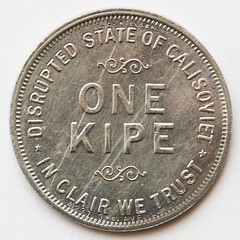
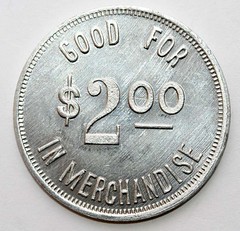
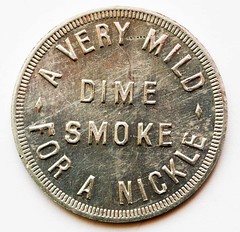
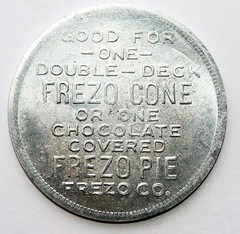
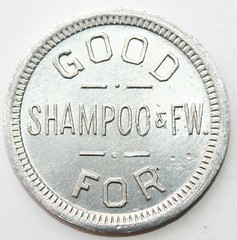
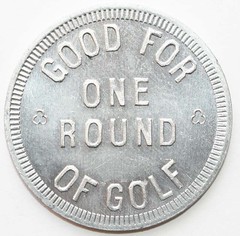
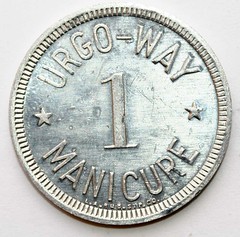

Dave adds:
On the 1 Manicure piece you can see the L.A. RUB. STP. CO. signature.

To read the complete lot description, see:
Anillo 3 Token Restrike Set
(https://www.northeastcoin.com/popupcontainer.jsp?include=vi&itemKey=zi26_157876504)
To read the complete article on NNP, see:
https://nnp.wustl.edu/library/book/525697?page=42
LSCC AND BCCS AT FUN IN TAMPA
The Liberty Seated Collectors Club (LSCC) and the Barber Coin Collectors' Society (BCCS) have lots planned in Tampa next week at FUN. The two clubs are sharing Booth #1909 on the bourse floor.
The LSCC will have an exhibit entitled, Collecting Liberty Seated Coins Through the Years, featuring a rare collection of vintage albums and coin boards, with key date coins on display from half dimes through Trade dollars. The LSCC's meeting is Friday January 5th at 9:00 a.m., featuring an educational program entitled The Value of a Dollar during the Civil War by Stephen Petty. Also, LSCC President Gerry Fortin is offering a FUN Seminar entitled, An Overview Of The Liberty Seated Quarter Series on Saturday January 6th at 1:15 p.m.
The BCCS meeting will be Friday January 5th at 3:00 p.m., featuring an educational program entitled, Collecting Barber Quarters by BCCS President John Frost. There will also be an exhibit of key date, patterns, and error Barber coins at Booth #1909.
Both meetings are open to visitors, and we invite you to come, and also stop by the exhibit table!
For mroe information about the two clubs, see:
www.lsccweb.org
www.barbercoins.org
NUMISMATIC CAREERS: A CHAT WITH NGC
In 1987, a company called the Numismatic Guaranty Corporation (“NGC”) was formed in order to provide a specific service to the numismatic community: an honest, trusted third party coin authentication and grading service. Although not the oldest third party group, established 15 years after the founding of the American Numismatic Association Certification Service (“ANACS”) and two years after the Professional Coin Grading Service (“PCGS”), NGC boasts an impressive 39 million authenticated and graded coins as of 2017, their 30th year of operation.
Max Spiegel, NGC Senior Vice President, Sales & Marketing, described employment, formal education, and careers in the third party coin grading service in an exclusive interview with JET Numismatics. For young coin collectors, some believe that their collection begins and ends with holding on to coins, placing them in an album, or simply protecting them in 2×2 cardboard flaps, for long term storage. However, the opportunities for younger generations to learn about getting more out of their collection, getting a numismatic education, and even making a career out of numismatics is vast, but unfortunately for the latter, not promoted as it should be.
As for the Numismatic Guaranty Corporation, their organization is described as a “dream job” for any type of numismatist, according to Spiegel. Spiegel continued to say, “You get to see some of the world’s greatest rarities and you are surrounded by some of the most talented numismatists in the world.”
For younger generations, many of the numismatists born in the 21st century are nearing the end of the K-12 educational system, and some will be seeking higher education. A difficulty for those considering our hobby as a career path through higher education is finding a degree involving numismatics. Currently, the University of Vienna in Austria offers programs involving numismatics, however for those numismatists seeking higher education in the United States, their options are slim to none.
When asked about this topic during the NGC hiring process, Spiegel offered an alternative to formal higher education, saying, “We look at numismatic experience and ability more than formal education. Many of our senior graders have decades of experience either as graders or dealers. Many of our junior graders have collected for a number of years and showed an eye for grading.” Spiegel goes on about the junior graders, saying, “They’re now being trained by the senior members of our grading team.”
For those determined to achieve a college degree, it is clear a degree specifically for numismatics is not necessary. According to Spiegel, “There are a variety of degrees that have a connection to numismatics, including economics, history and art history.” As for his organization, Spiegel said, “When NGC is evaluating prospective graders, however, we seldom consider what they studied in school. We are much more interested in their numismatic knowledge, grading ability and how well they work with our existing grading team. Prospective graders are always tested in a grading room setting before we make a job offer.”
To read the complete article, see:
NUMISMATIC CAREERS: A CHAT WITH NGC
(https://jetnumismatics.wordpress.com/2017/12/29/numismatic-careers-a-chat-with-ngc/)
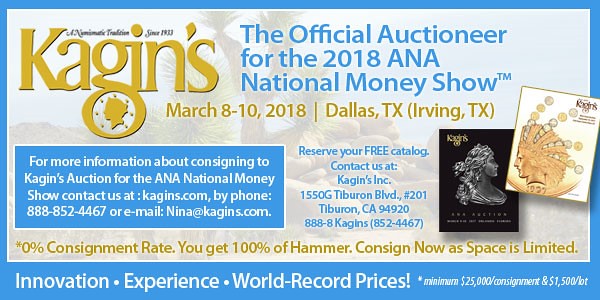
ARTICLES HIGHLIGHT HENRY III GOLD PENNY
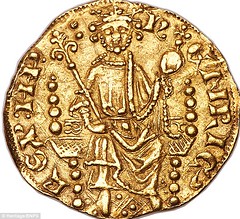
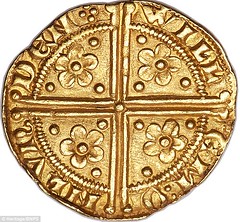
The first ever English gold coin that had to be scrapped after a banking blunder meant is was worth less than its weight in gold, is now tipped to sell for £500,000.
Some 52,000 of the King Henry III gold pennies were struck nearly 800 years ago before it was realised they were too heavy.
The basic mistake meant the gold it was made from was worth more than the coin itself.
This made the coins financially unviable as the holders could get more money from melting them down for gold rather than using them as currency.
Virtually all of them were smelted and were replaced with correctly weighed pennies in 1257.
Today only eight of the coins exist, with all but three of them held by institutions.
One of the three in private hands has been put up for sale and is set to fetch £500,000.
It is being sold by an anonymous collector who has owned it for 21 years.
Cristiano Bierrenbach, of the numismatic department at US-based Heritage Auctions, said: 'These gold pennies were the first gold coins made in England.
'King Henry III tried to establish a trade conversion value for a coin to match the Ducat coin which was used on mainland Europe.
'He ordered the creation of a gold coin for his kingdom to be struck at twice the weight of a silver penny.
'But the issue was ultimately unsuccessful. The coins had a standard weight of 3.5 grammes but an error was made and the coin was made too heavy, about 4.2 grammes.
'After that the coin was pulled from circulation and they were melted down and more gold pennies were struck at the correct weight.
'It is incredibly rare to come across one of these. It is a big ticket item and we expect it to got for higher than the estimate.'
The coin depicts King Henry seated on a throne wearing robes. He has a scepter in his right hand and an orb in his left.
The reverse features a long cross and the name Willem on LVND. This is William of Gloucester who was the King's goldsmith and ultimately responsible for the error.
It is being sold on January 8.
To read the complete article, see:
(http://www.dailymail.co.uk/news/article-5213041/800-year-old-coin-minted-Henry-III-sell-500-000.html) 800-year-old coin minted by Henry III but then scrapped when blundering officials realised it
was worth more as gold than its face value is expected to make £500,000 at auction
To read the complete article, see:
First ever English gold coin worth just a penny will sell for unbelievable amount
(http://www.mirror.co.uk/news/uk-news/first-ever-english-gold-coin-11753688)
To read the complete article, see:
GOLD RUSH First-ever gold coin that was once worth just a penny could sell
for £500,000 at auction (https://www.thesun.co.uk/money/5216628/first-ever-gold-coin-worth-just-a-penny-could-sell-for-500000-at-auction/)
THE 1934 NAZI-ZIONIST COOPERATION MEDAL
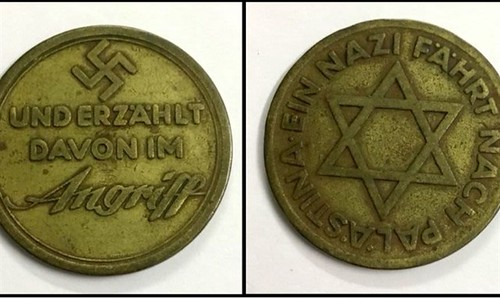
Among other things, a rare medal from 1934 called "Nazi in Palestine" will be sold: A medal minted on the occasion of a series of articles "A Nazi goes to Palestine" published in the Nazi journal Der Angriff ("The Attack"). The medal is a memento of cooperation between the Nazi Party and the German Zionist Association, in favor of the joint goal of bringing German Jews to Palestine (the "transfer").
The center of one side sports a Star of David surrounded by the German caption "A Nazi going to Palestine" (Ein Nazi fährt nach Palästina). In the center of the other side is a swastika and the caption "and writes about it in Angriff" (Und erzählt davon in Angriff).
At the beginning of the period of Nazi rule in Germany, the Zionist movement tended to cooperate with the line taken by the Nazi regime at the beginning of its path - encouraging German Jewish immigration to Palestine. In the spring of 1933, the Union of German Zionists decided to contact elements within the Nazi party that might support the Zionist cause.
Kurt Tuchler, a German-Jewish jurist and judge who was a member of the German Zionist Association, appealed to Leopold von Mildenstein, head of the Jewish department of the SD (Nazi and SS Security Service), and asked him to write about the Jewish community in Palestine. In 1933 the two traveled together to Israel with their wives for a month, in order to allow von Mildenstein to be impressed by the flourishing Zionist enterprise.
On his return to Germany, von Mildenstein published a series of twelve articles accompanied with photographs about his tour of Palestine in the Nazi journal Der Angriff, the organ of Nazi propaganda minister Joseph Goebbels. The articles bore the title "A Nazi goes to Palestine." Goebbels issued the medal on the occasion of the article series.
To read the complete article, see:
Nazi-Zionist cooperation medal offered at auction (https://www.israelnationalnews.com/News/News.aspx/239848)
NORTH KOREA'S KIM JONG-SUK GOLD COIN
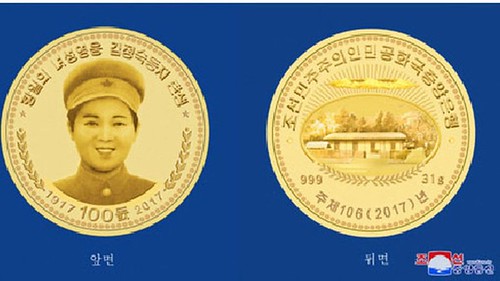
The birth centenary of "war heroine" Kim Jong-suk is currently being celebrated in a big way there.
Kim is no ordinary woman though, but the first wife of North Korea's founding leader Kim Il-sung and the grandmother of current leader Kim Jong-un.
She is believed to have been born to a poor farming family on Christmas Eve in 1917, and is said to have fought with guerrilla forces against the Japanese in the 1930s.
She died in 1949, aged just 31, and official accounts ascribe her death to the hardships she endured as a guerrilla fighter.
To mark her birth centenary, North Korean media have been describing her wartime exploits in typically hyperbolic language.
Kim is not just an "outstanding woman revolutionary" and "the sacred mother of the revolution", "her marksmanship was so marvellous that even her comrades-in-arms used to guess the number of killed enemies by counting empty bullet pockets of her cartridge belt after battles," says a report in the state-run KCNA news agency.
North Korea says it has released new postage stamps, minted new gold and silver coins, and held cultural performances in her honour.
To read the complete article, see:
N Korea marks the birth of Kim Jong-un's grandmother (http://www.bbc.com/news/blogs-news-from-elsewhere-42479956)
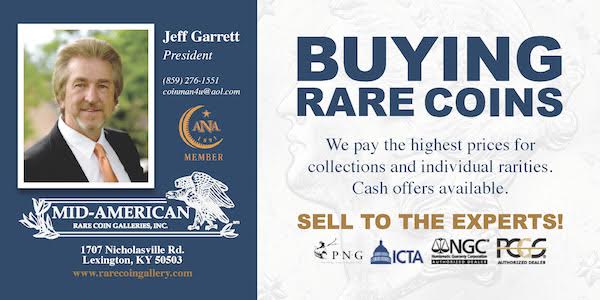
NEW YORK CITY CREEPING TOWARD CASHLESSNESS
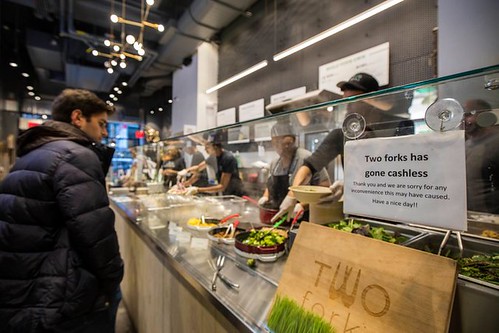
The other day at Dig Inn, a just-opened lunch spot on Broadway and 38th Street in Midtown Manhattan, Shania Bryant committed a consumer faux pas. She placed her order for chicken and brown rice and yams, and when she got to the register, she held out a $50 bill.
“Sorry,” the cashier told her. “We don’t take cash.” Not, “We don’t take $50s.” No cash. Period.
“What?” Ms. Bryant asked.
The cashier patiently explained. Credit and debit cards were fine, as was the easy-to-download Dig Inn phone app. But the almighty dollar was powerless.
“I’ve never experienced that before,” said Ms. Bryant, 20, an assistant to a designer. “I guess we’re in new times.”
Indeed. Cashless businesses were once an isolated phenomenon, but now, similarly jarring experiences can be had across the street at Sweetgreen, or two blocks up at Two Forks, or next door to Two Forks at Dos Toros, or over on 41st Street at Bluestone Lane coffee. In Midtown and some other neighborhoods across New York City, cashless is fast on its way to becoming normal.
Some people already live in this cashless future. They find nothing strange about paying for a pack of gum with a swipe of a card. If you are one of these people and you are still somehow reading this article, you may be thinking, “What on earth is the big deal?”
At Two Forks on 40th Street, where the lunch offerings have cheery names like Squash Goals, Kristin Junco, a 34-year-old auditor for the state Education Department, said she had not used cash for about a week and much prefers a cashless establishment to its opposite. “We travel a lot for work,” she said, gesturing to a colleague, “and if they don’t take credit cards that makes things difficult.”
On the other side are those who were raised to equate credit card spending with taking on debt — something to be avoided whenever possible, and reserved in any case for major expenditures. Those people do things like grab a $5 bill from their purse and run down from their office to the place on the corner thinking that they can buy a snack with it. They will catch on eventually.
Tim McLoughlin, 59, a writer in Brooklyn, did a double-take when he walked into a Bluestone Lane branch in Dumbo, Brooklyn. “My reaction was ‘Jesus, a New York City restaurant that records all its revenue? How can they stay in business?’ ”
They can, and do. At Pokee, a poke-salad place in Greenwich Village, cash is treated like a quarantinable substance. “If you have exact change, we’ll take it,” said the woman behind the counter. “We give it to the manager and he puts it in a safe. Because we don’t have a register.”
“Every day I have an argument with somebody about it,” said a cashier at the Dos Toros on 40th Street, who said she could not give her name because she was not authorized to speak without permission from the company. “I don’t make these rules, you know.”
Critics have noted that the practice also excludes the unbanked, though, at least so far, the places going cashless are sufficiently expensive ($3 for a coffee, $8 and up for lunch) that the prices alone will turn off most people who lack a bank account.
But wait, how is this even allowed? Doesn’t the dollar bill say it’s “legal tender for all debts, public and private”? The Federal Reserve’s website says that notwithstanding that language, there is no federal law compelling a business “to accept currency or coins as payment for goods or services.”
Asked why the $8.71 a customer owes for that Turmeric Sweet Potato Hummus Toast she just ordered is not considered a debt, the Federal Reserve offered a partial explanation, but it begins with the words “for purposes of illustration, and not for attribution to the Fed,” so we cannot share the rest. But a professor at the New York University School of Law who teaches contract and commercial law, Clayton Gillette, laid it out.
First of all, he said, you do not have a debt until after you receive a good or a service. What about at a sit-down restaurant, where you pay after you eat? “Assuming the restaurant lets you know up front that they don’t take cash, they’re offering to serve you a meal, but they are offering it on their terms,” Professor Gillette said. “If you consume the meal, you’ve accepted the terms of the contract.”
Still, occasionally, the Luddites win. A couple of weeks ago, Lisa Gaytan, 60, and a friend walked into a Van Leeuwen Artisan Ice Cream store in Boerum Hill, Brooklyn. Her friend ordered a vegan chocolate cone. He was told he could not pay with cash. He handed over his credit card. There was a problem with the card reader, or maybe the Wi-Fi. In any case, the machine was down. The cashier apologized and said the ice cream was on the house.
“My thought was, sometimes the analog world works better than the digital,” Ms. Gaytan said. “We both walked out of there saying ‘That was crazy.’ ”
David adds:
I think that the Fed is wrong here. The term "legal tender" means that when payment is tendered in a form that a sovereign nation has declared to be legal tender, whether in coins or paper money, the creditor is forced to accept it. (One-cent pieces may not have legal tender status because they may not be put in some toll collection systems.)
Section 16 of the Act of April 2, 1792 ("the Mint Act") provides that gold and silver coins struck by the U. S. Mint shall be "a lawful tender in all payments whatsoever". It does not define "lawful tender" nor give legal tender status to copper coins.
The Act of February 9, 1793, gives "legal tender" status to certain gold and silver coins of foreign nations. This act, also, does not define the term "legal tender".
Section 1 of the Act of February 25, 1862, to "authorize the issue of United States notes ..." provides that the notes issued pursuant to the Act "shall also be lawful money and a legal tender in payment of all debts public and private, within the United States, except duties on imports" and interest upon bonds and notes. Again, the term "legal tender" is not defined.
I have not looked further into whether sellers (or creditors) are required to accept U. S. coins or currency as payment for merchandise or services rendered. Of course, gold and silver coins no longer circulate. But it looks as if that question may be ripe for a court decision.
Meanwhile, it will be interesting to see if court challenges to the practice appear, and how far they rise in the U.S. legal system (or elsewhere in the world). -Editor
To read the complete article, see:
Cash Might Be King, but They Don’t Care
(https://www.nytimes.com/2017/12/25/nyregion/no-cash-money-cashless-credit-debit-card.html)
BITCOIN AND THE BANK OF ENGLAND'S CRYPTOCURRENCY
To listen to the complete program, see:
What’s The Point Of Bitcoin? (http://www.bbc.co.uk/programmes/w3csvsyh)
The Bank of England's Cryptocurrency
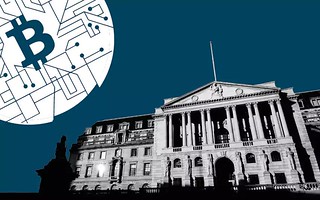 The Bank of England could green light its own Bitcoin-style digital currency as early as 2018, The Telegraph can disclose.
The Bank of England could green light its own Bitcoin-style digital currency as early as 2018, The Telegraph can disclose.
A research unit set up by the Bank is investigating the possible introduction of a crypto-currency linked to sterling.
If approved, a virtual currency issued by the bank would pave the way for a revolutionary shake up of high street banking.
A Bank of England-issued digital currency would potentially allow British citizens to keep their money - in digital form - with the central bank itself, dispensing with the need for a retail bank. Big-ticket transactions, such as buying a house, could happen in nanoseconds.
To read the complete article, see: http://www.telegraph.co.uk/news/2017/12/30/bank-england-plots-bitcoin-style-digital-currency/ (http://www.telegraph.co.uk/news/2017/12/30/bank-england-plots-bitcoin-style-digital-currency/)
MORE CHRISTMAS TOKENS
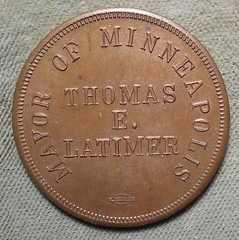

Best Wishes Christmas 1936, Good Luck // Mayor Of Minneapolis, Thomas E. Latimer. Copper, 31mm Slabaugh-28. A scarce local-to-me token that I have only seen a couple of times in 40+ years in exonumia.
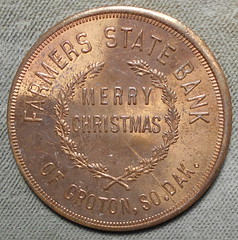
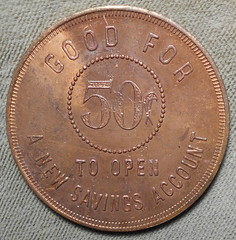
Farmers State Bank Of Groton, South Dakota, Merry Christmas // Good For 50c To Open A New Savings Account. Brass, 32mm, the only example that I have seen.
HAPPY NEW YEAR 2018
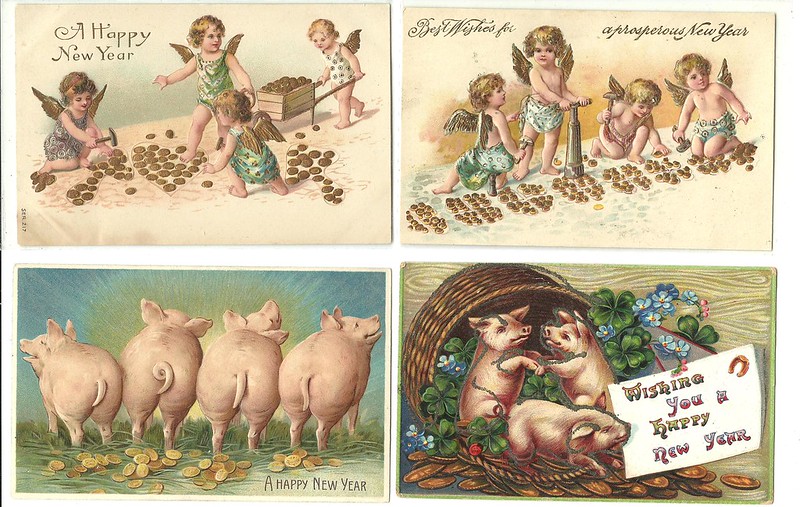
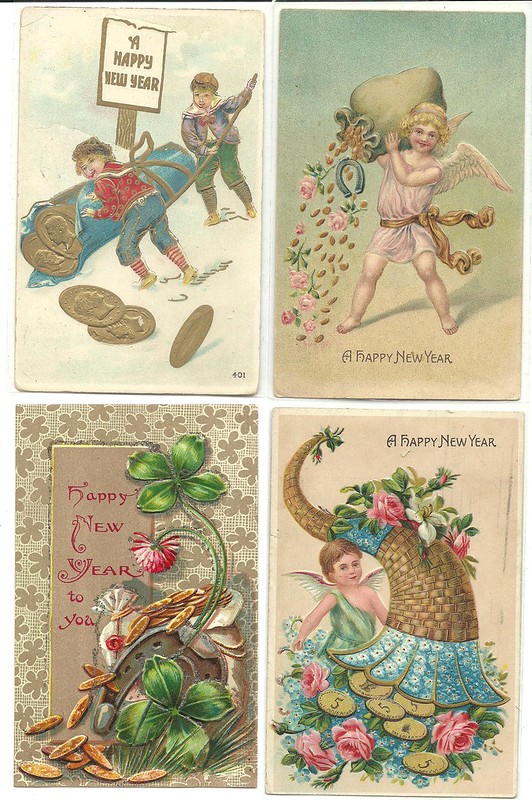
FEATURED WEB SITE: NUMISMATIC STUDIES
This week's Featured Web Site is Antonio M Trigueiros' Numismatic Studies site (Estudos de Numismática).Numismatic Studies is a non-profit organization dedicated to edit scientific works published by Portuguese authors on the general theme of Numismatics, although including other similar disciplines, such as Medal Art, Banknotes and Orders and Decorations.

www.estudosdenumismatica.org

